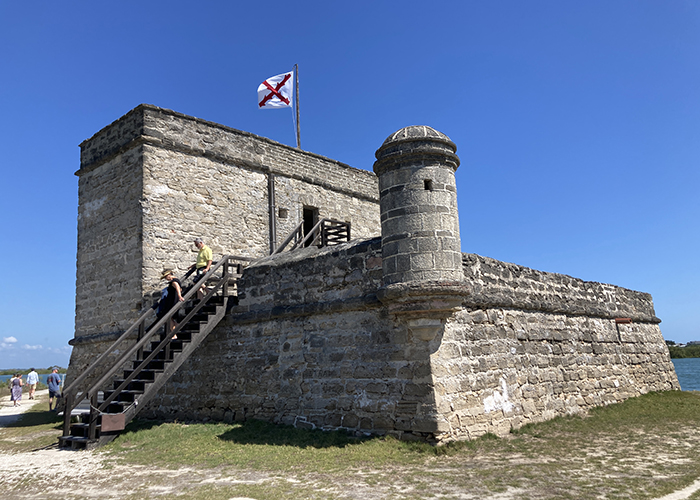 Previous Day |
Daytona Beach, FL → Jacksonville, FL 124.0 mi (199.6 km) |
 Next Day |
Rise and shine, everyone!
This morning, I am up and at ’em on a tight, tight schedule! I’ve got a boat to catch at the start, a park that closes early at the finish, and a bunch of history to explore in between! It was a good thing the namesake Sun Viking was there to greet me and send me on my way as soon as I’d filled up on blueberry pancakes by the pool!
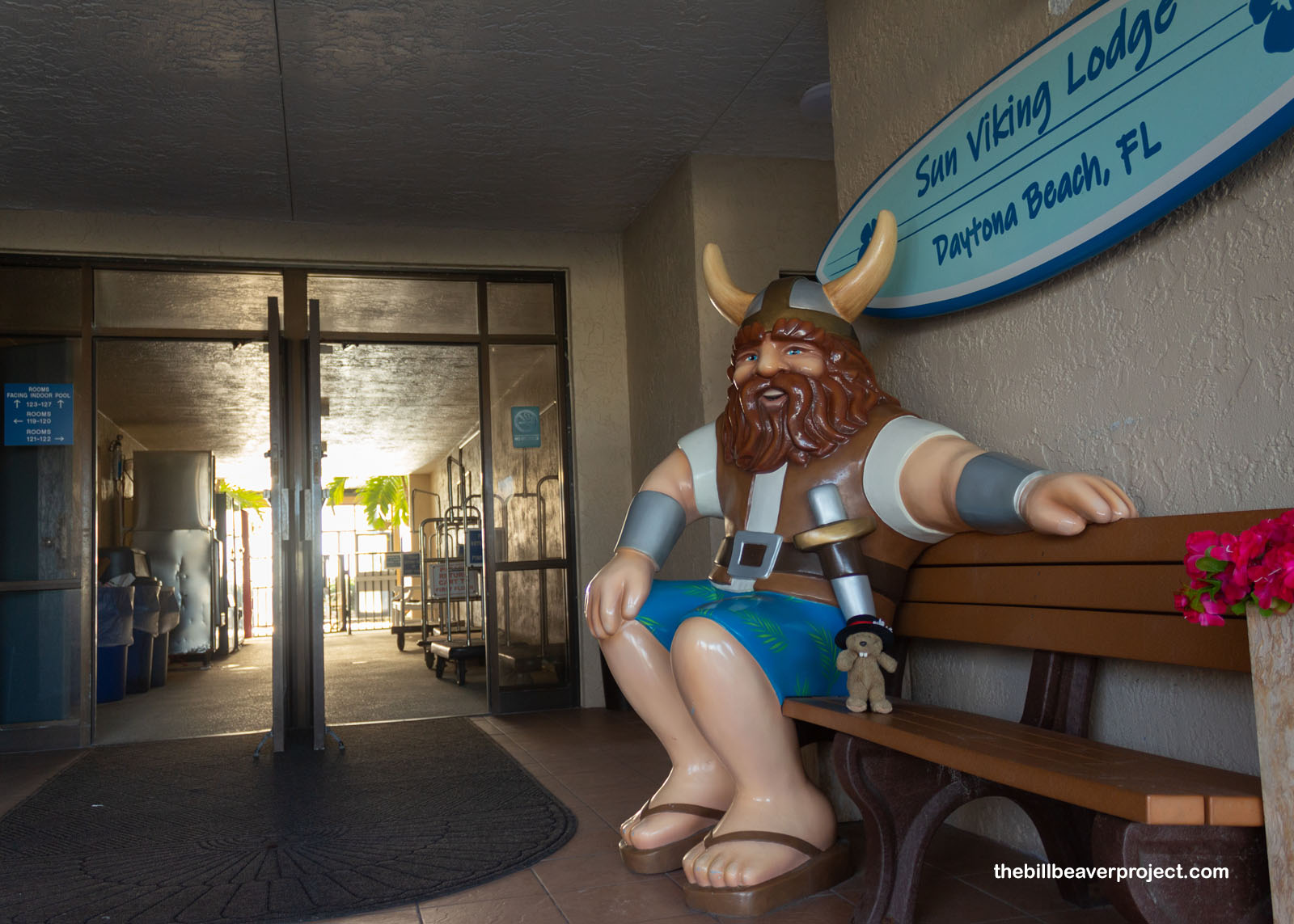 |
As I learned yesterday, the Spanish Crown had its eyes on La Florida for a long time, and in order to stake their claim, they needed to set up some forts, like this one, Fort Matanzas!
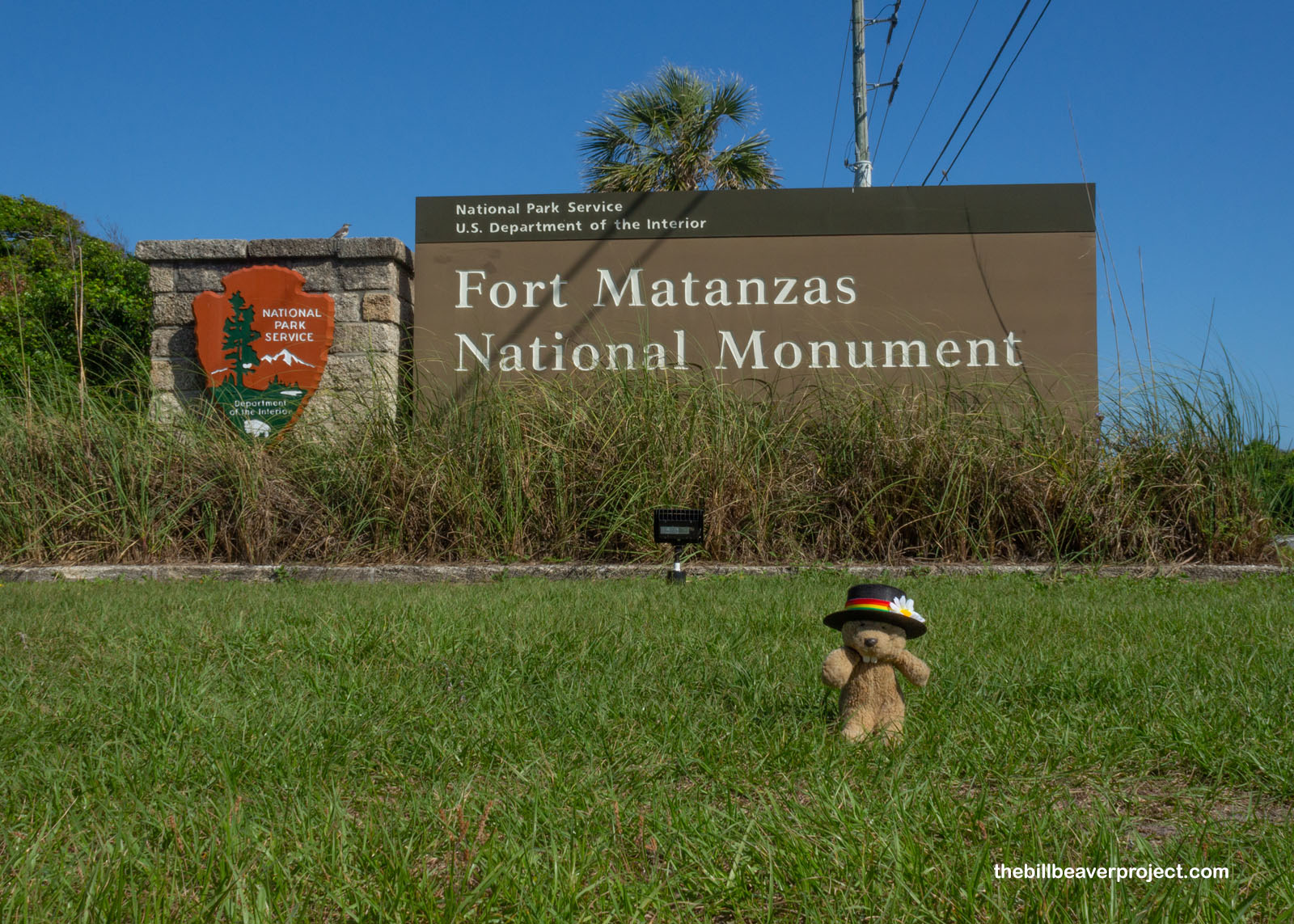 |
At 10:30, I hopped aboard a shuttle boat called Trinité, named for a French supply ship, which I’ll get to in a bit, and motored across the inlet. There, a group of us disembarked past a colony of fiddler crabs, and the ranger told us more about the place! “Matanzas” means “slaughters,” and it got its name from a Spanish massacre of French sailors here in 1565! This, however, took place over 200 years before the fort was built!
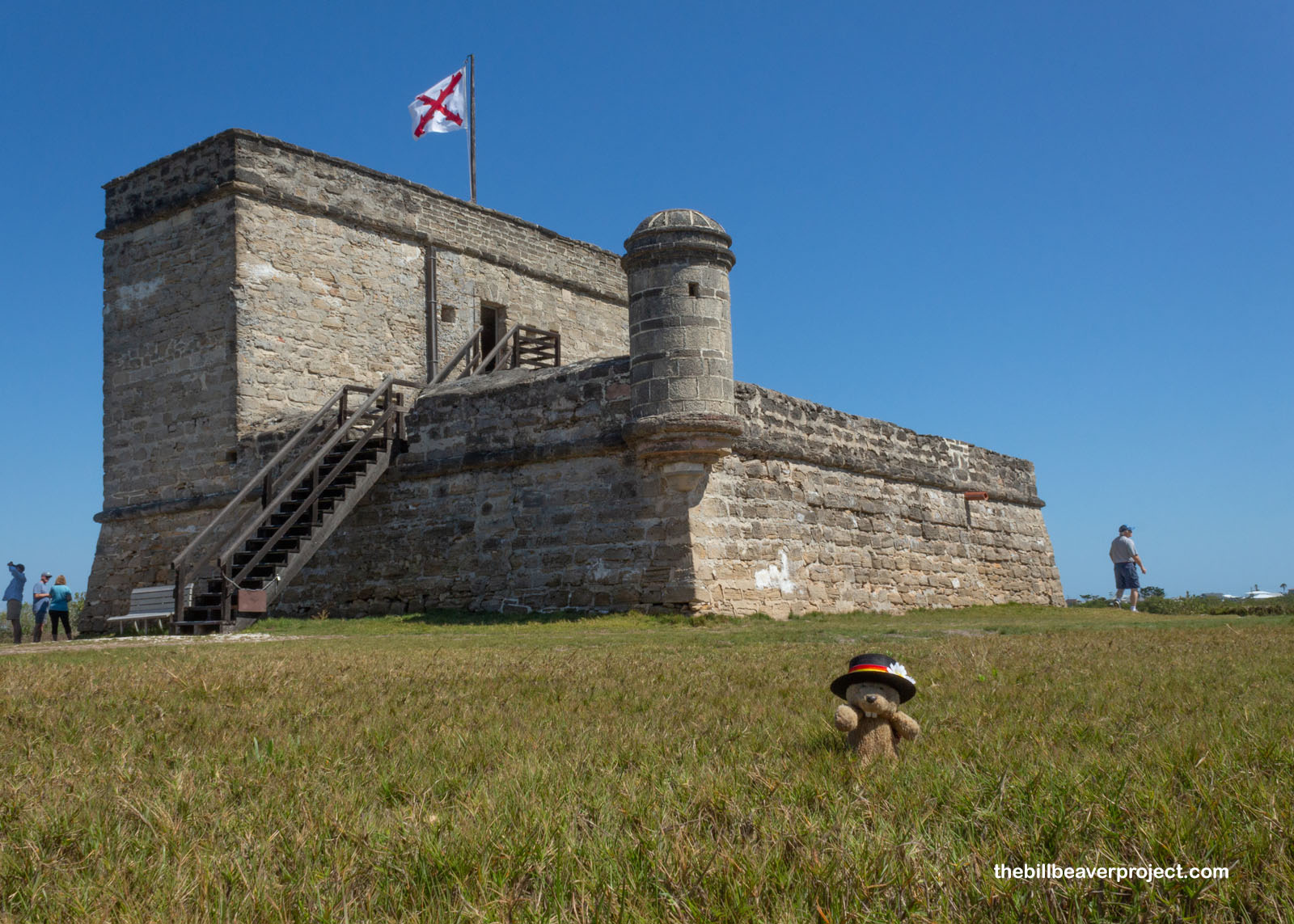 |
But by 1740, Spanish colonists were facing an even greater threat: the British! So they set to building a stone fort to guard the Matanzas Inlet from French pirates and British settlers alike! It two years to build Fort Matanzas because of how difficult it was to set up a stable foundation in the marsh and because they were also fending off attacks! There were only six soldiers stationed here at a time with cannons always at the ready in case of danger!
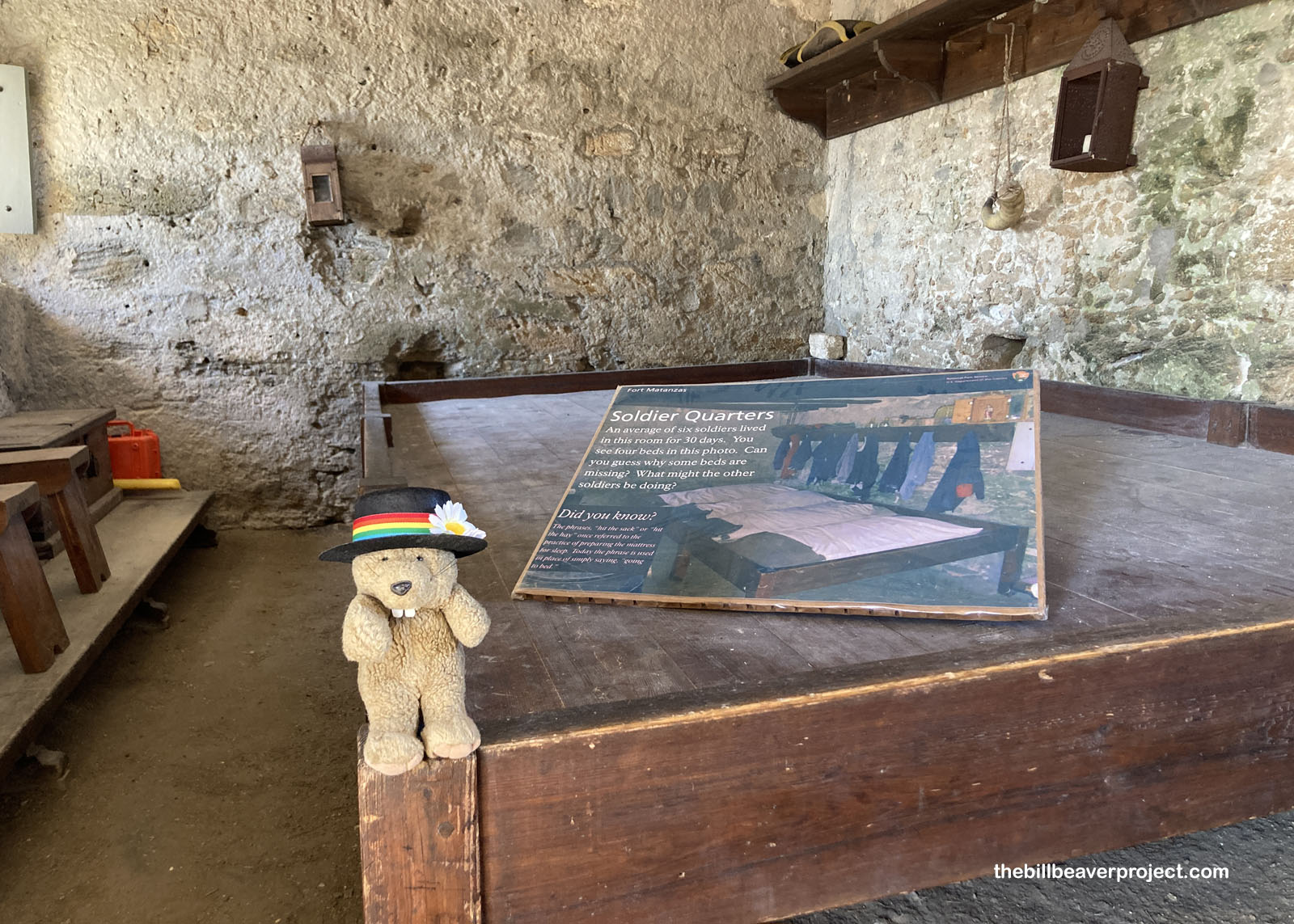 |
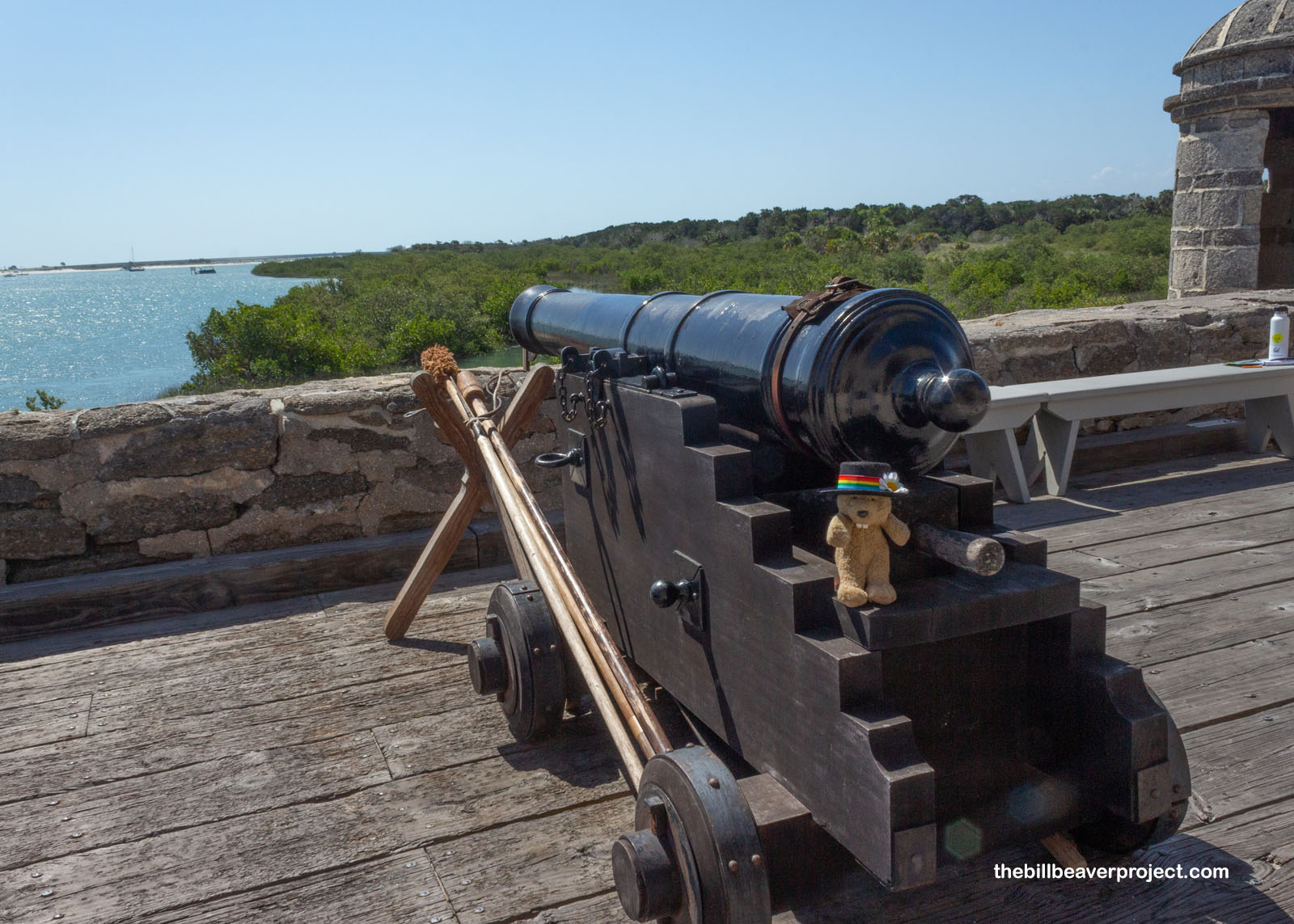 |
Time at Fort Matanzas was super fleeting, only about 20 minutes, and the ranger warned everyone that if they wanted to visit the top of the tower, they’d need to do it right away! It was a tight squeeze up the ladder, but quite a few folks made the climb!
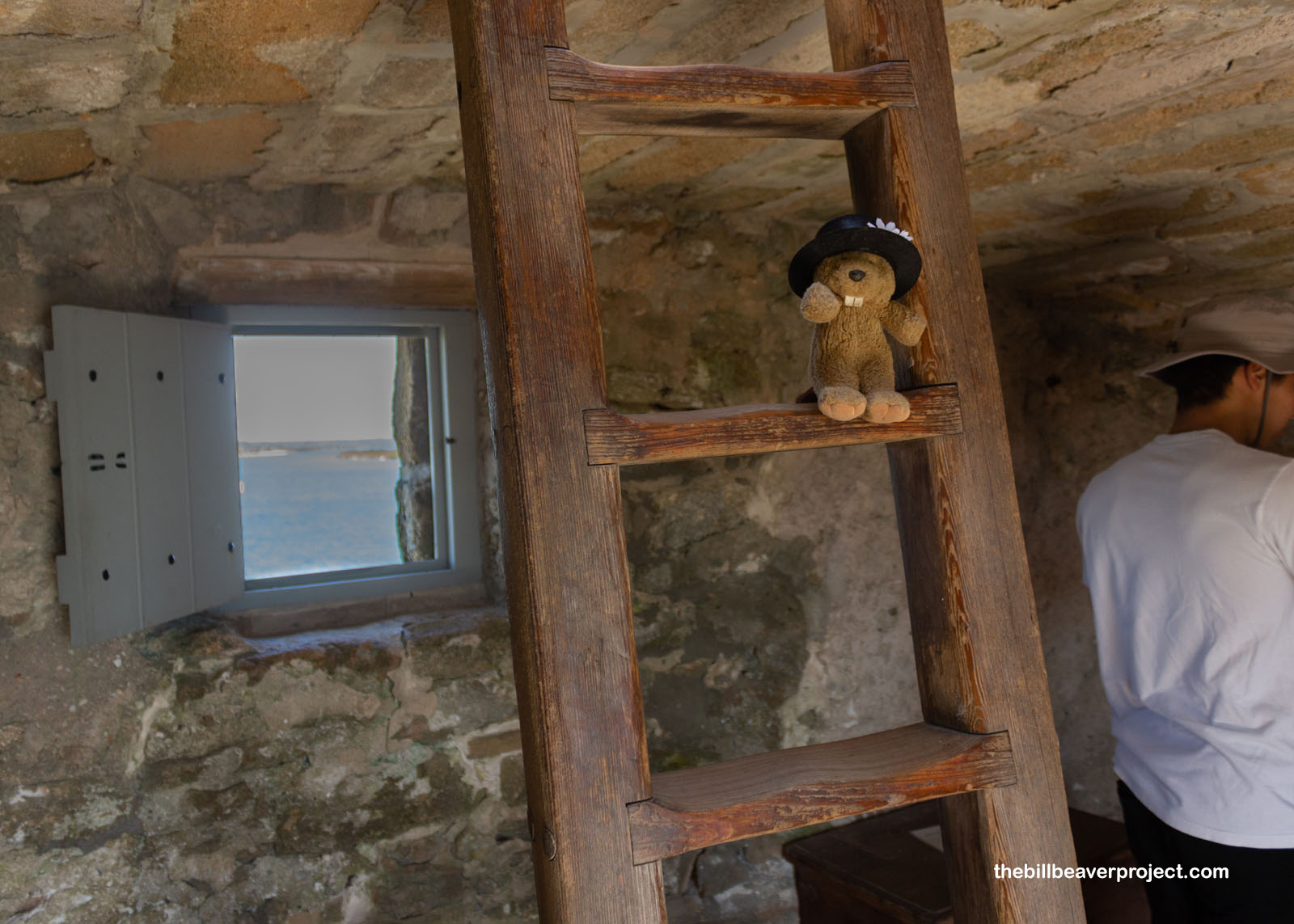 |
From up here, the wind was whipping the Spanish Colonial flag, featuring a red Burgundian Cross, a shape otherwise called a saltire raguly—saltire for the X shape and raguly for the jagged lines of the X! This flag came into fashion when the grandson of Ferdinand and Isabella took the throne in 1506 as Philip I. He’d come from the French state of Burgundy, so technically, the flag that flew over the conquest of the Americas was French in origin!
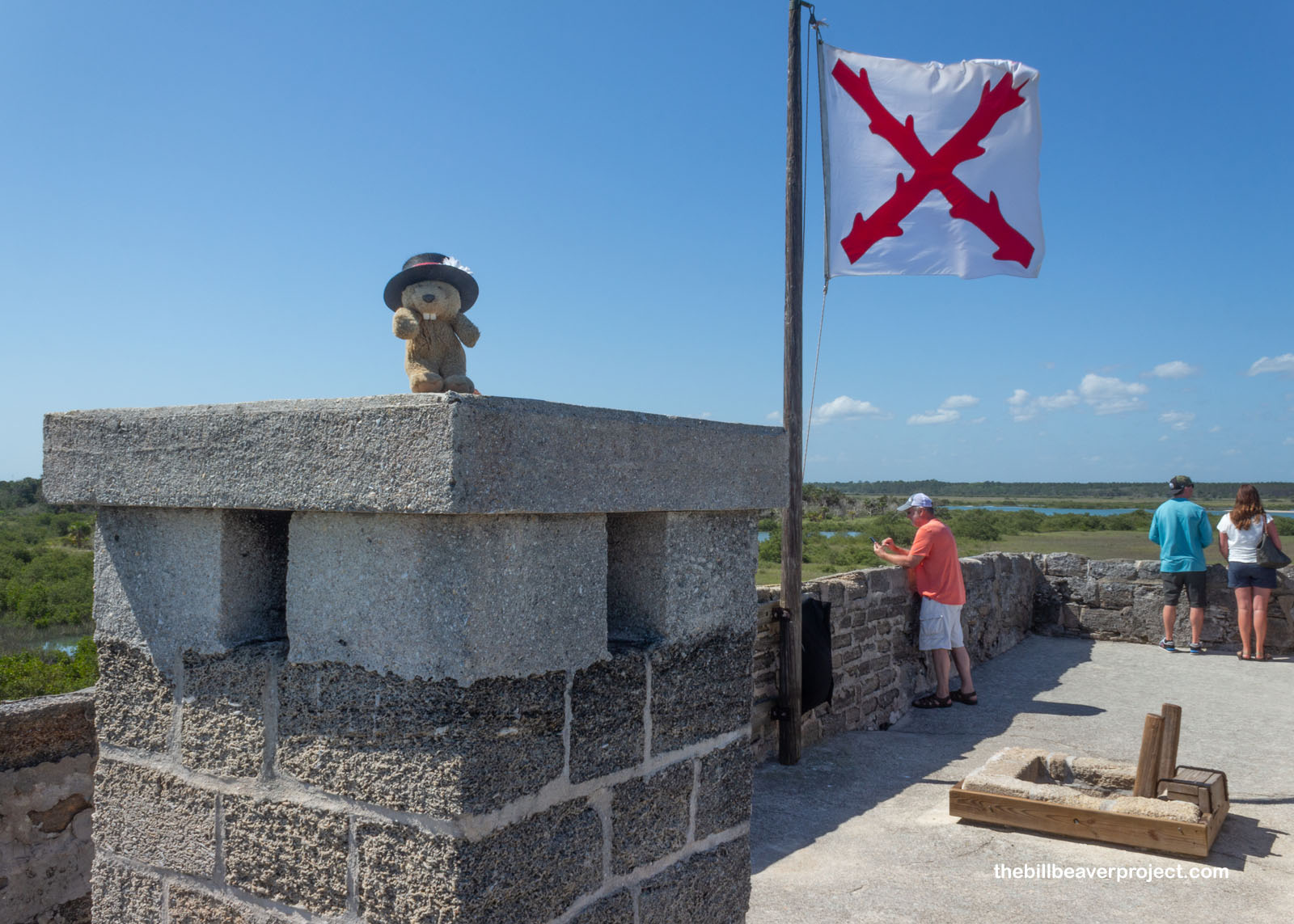 |
That was one of the many things for watchers to puzzle over as they stared out from this tower to an ocean horizon in the east and a plant horizon in the west, for 30 days at a time! After their shifts were over, then they’d head back to St. Augustine, which I thought was a great idea as the ranger herded us all back onto the boat!
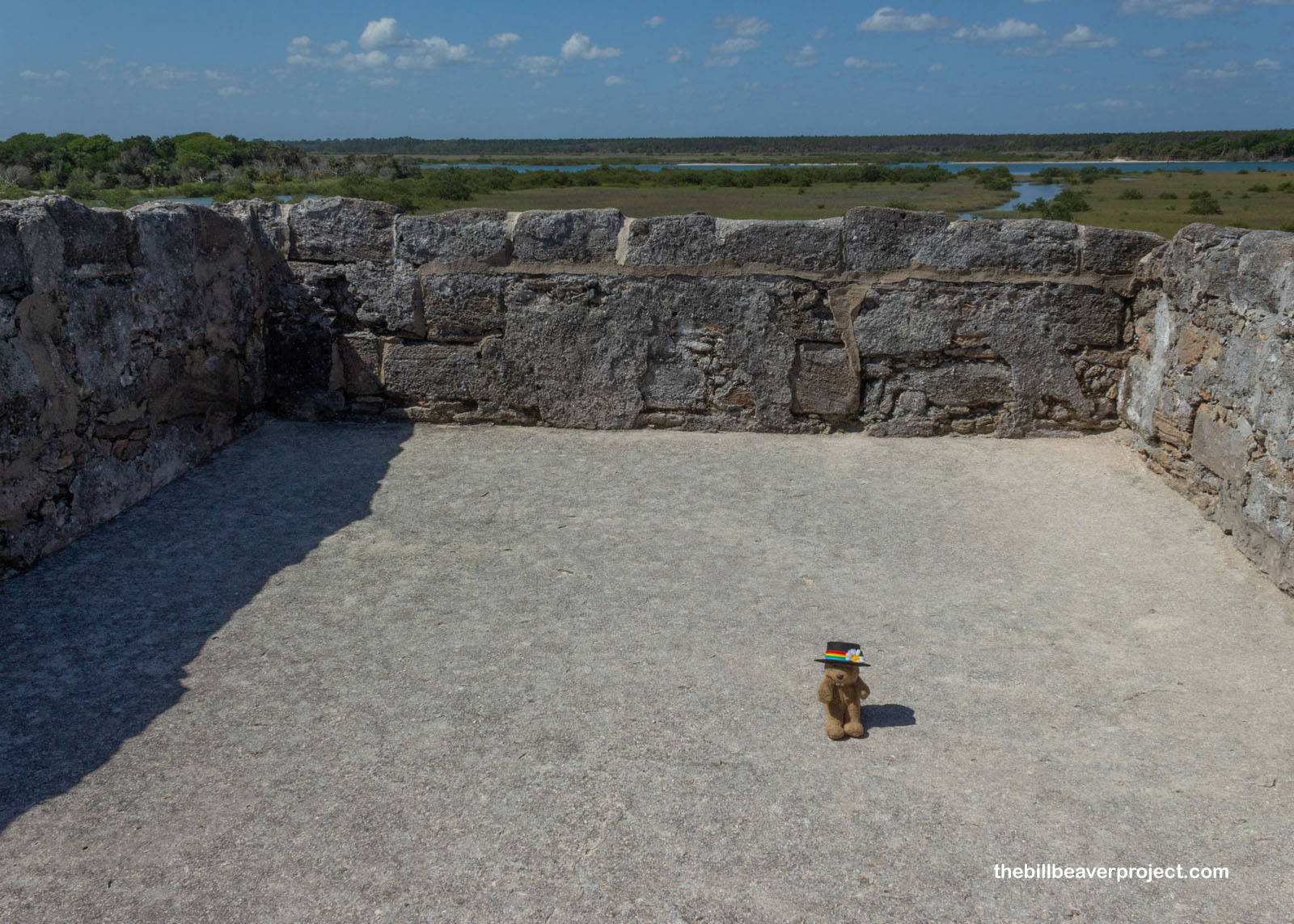 |
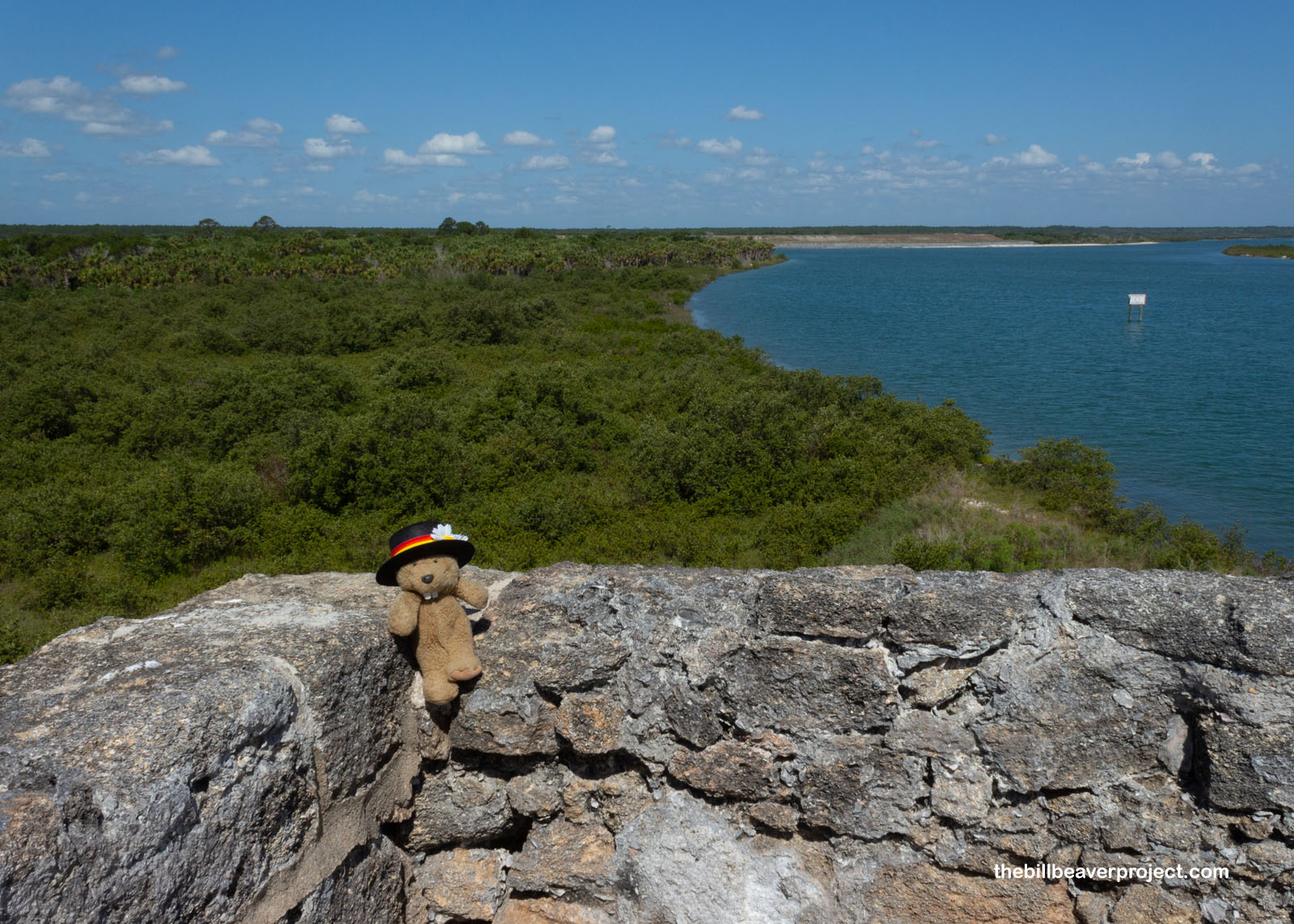 |
I motored into that town past the famous 165-foot St. Augustine Lighthouse! Built between 1871 and 1874, it featured a 9-foot tall Fresnel lens that could be seen from 19-24 nautical miles out at sea! Sadly, this lens was damaged by vandals, but its restoration was the first of its kind in the nation! Today, it’s a museum that lets folks visit the very top for what’s surely a spectacular view! I, as you might guess, did not have enough time, because I had more places to be!
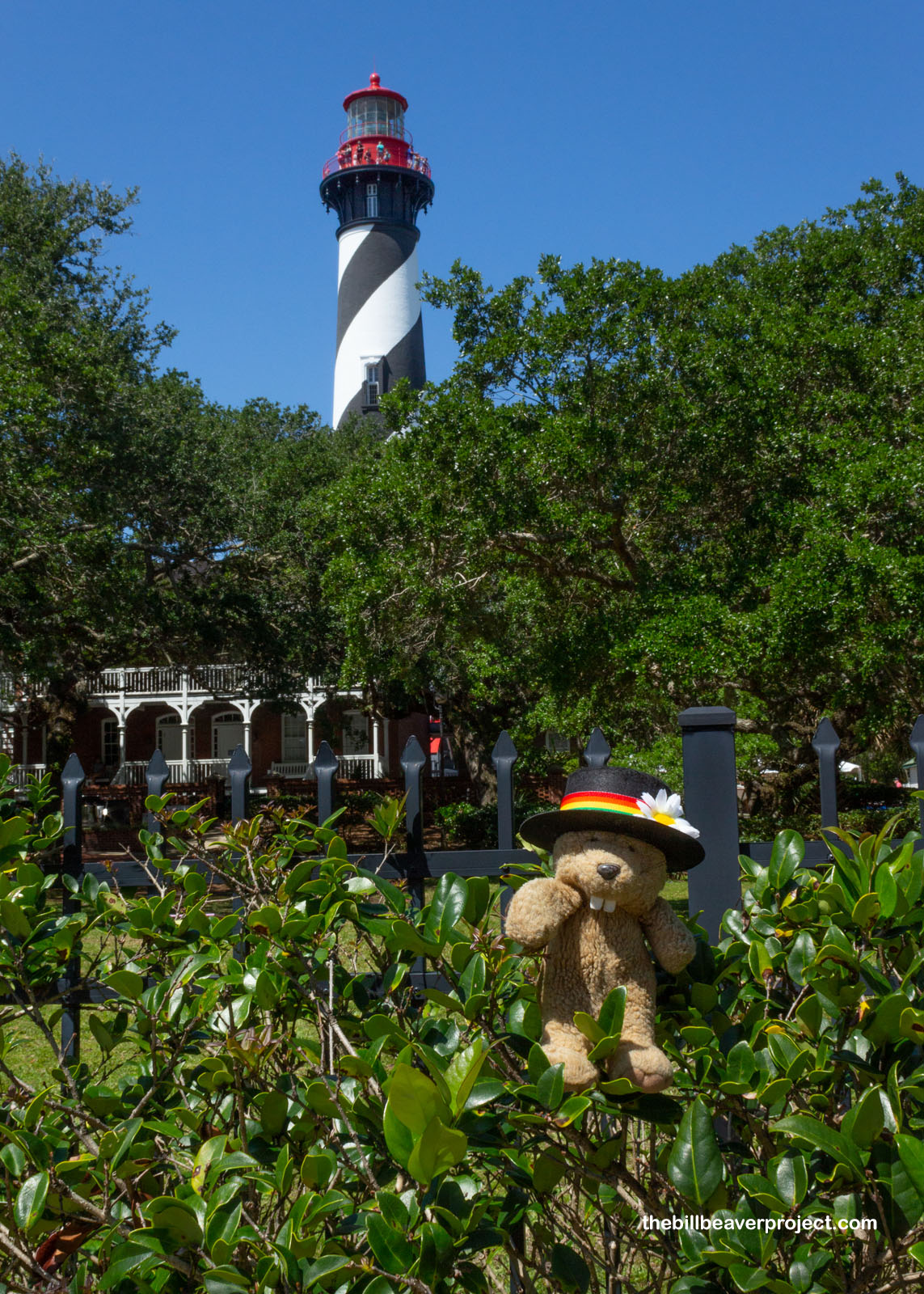 |
That kind of urgency is what led to the construction of Castillo de San Marcos between 1672 and 1695. See, Spain and France were already vying for territory on the east coast of La Florida, but by the late 1500s, the British Empire got a whiff of resources across the Atlantic, and they wanted a bite!
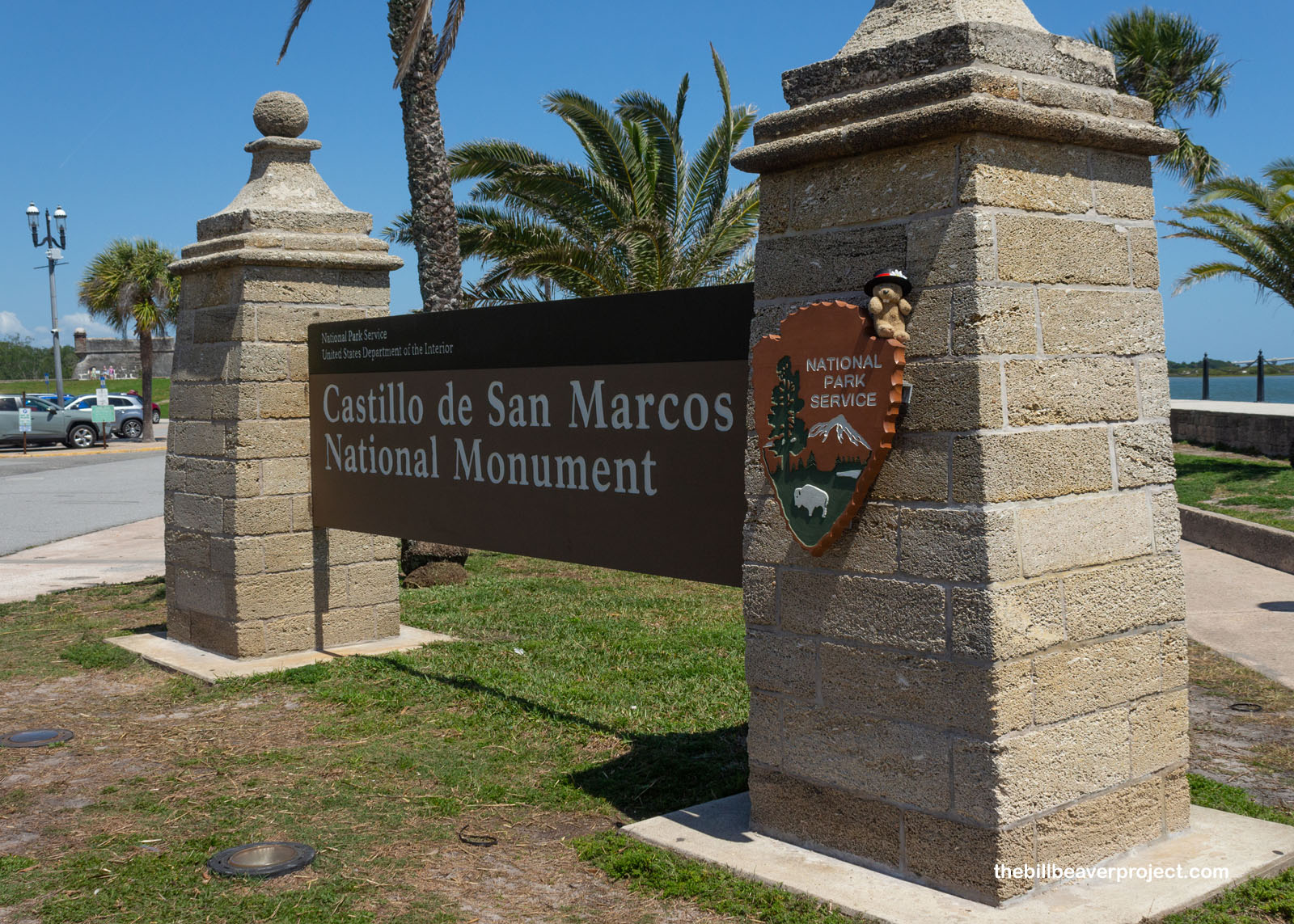 |
It took several raids, from Sir Francis Drake in 1586 to Robert Searle in 1668 to convince the Spanish crown that one rotten wooden fort would not be enough to defend St. Augustine. By the time the British founded Charles Towne just north of here, it became more urgent. So, the governor of Cuba and viceroy of New Spain sent funds for the twenty-three year construction of the Castillo de San Marcos. Designed by Ignacio Daza and shaped like a star with one arm cut off, this fort, like Fort Matanzas, was built from coquina, a kind of shell-based limestone. That was the key to its success, because porous coquina could absorb cannon fire! No matter how many times St. Augustine got attacked afterward nobody could break these 14-foot thick coquina walls. That’s how it’s survived long enough to earn the title of oldest masonry fortress in North America!
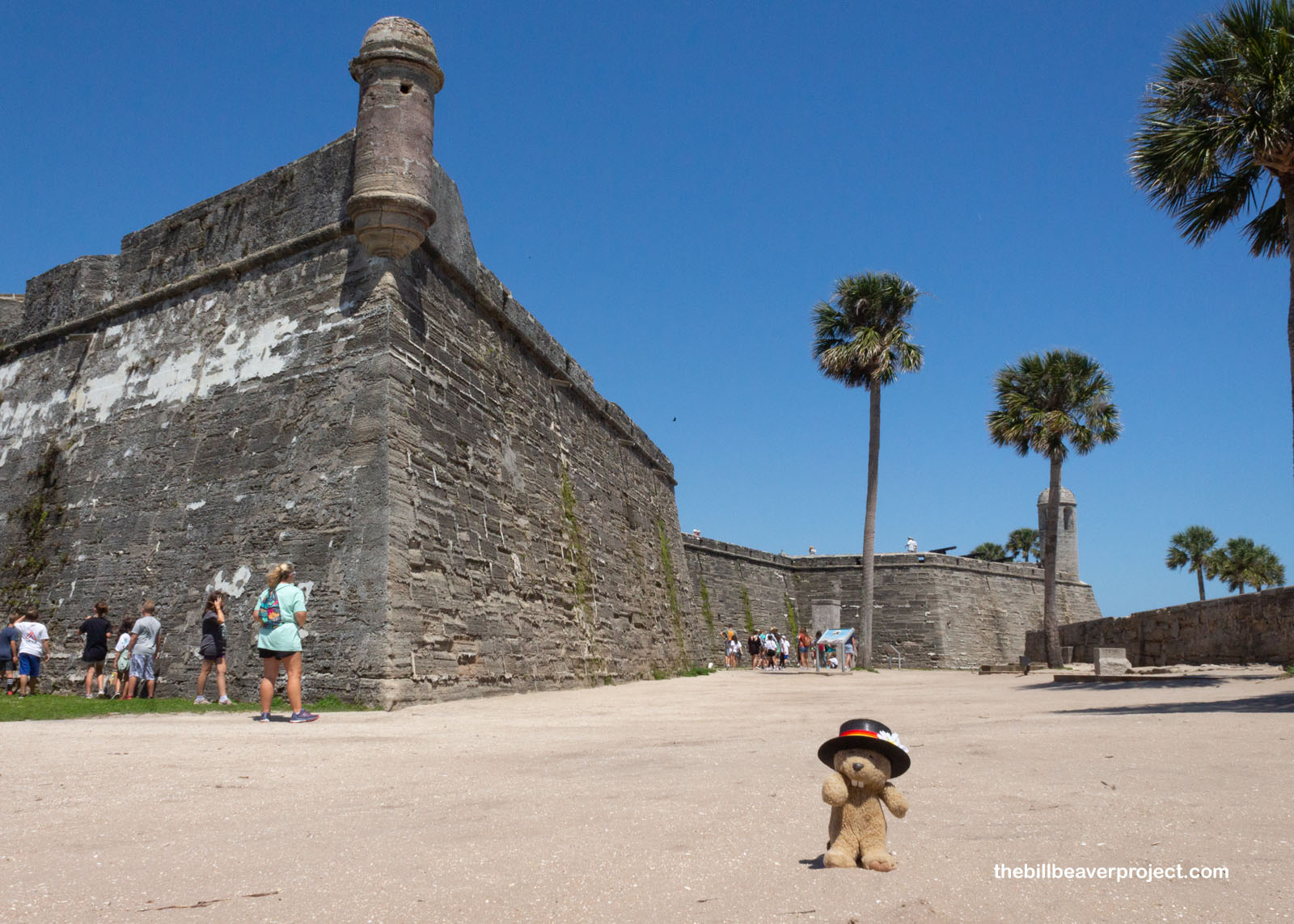 |
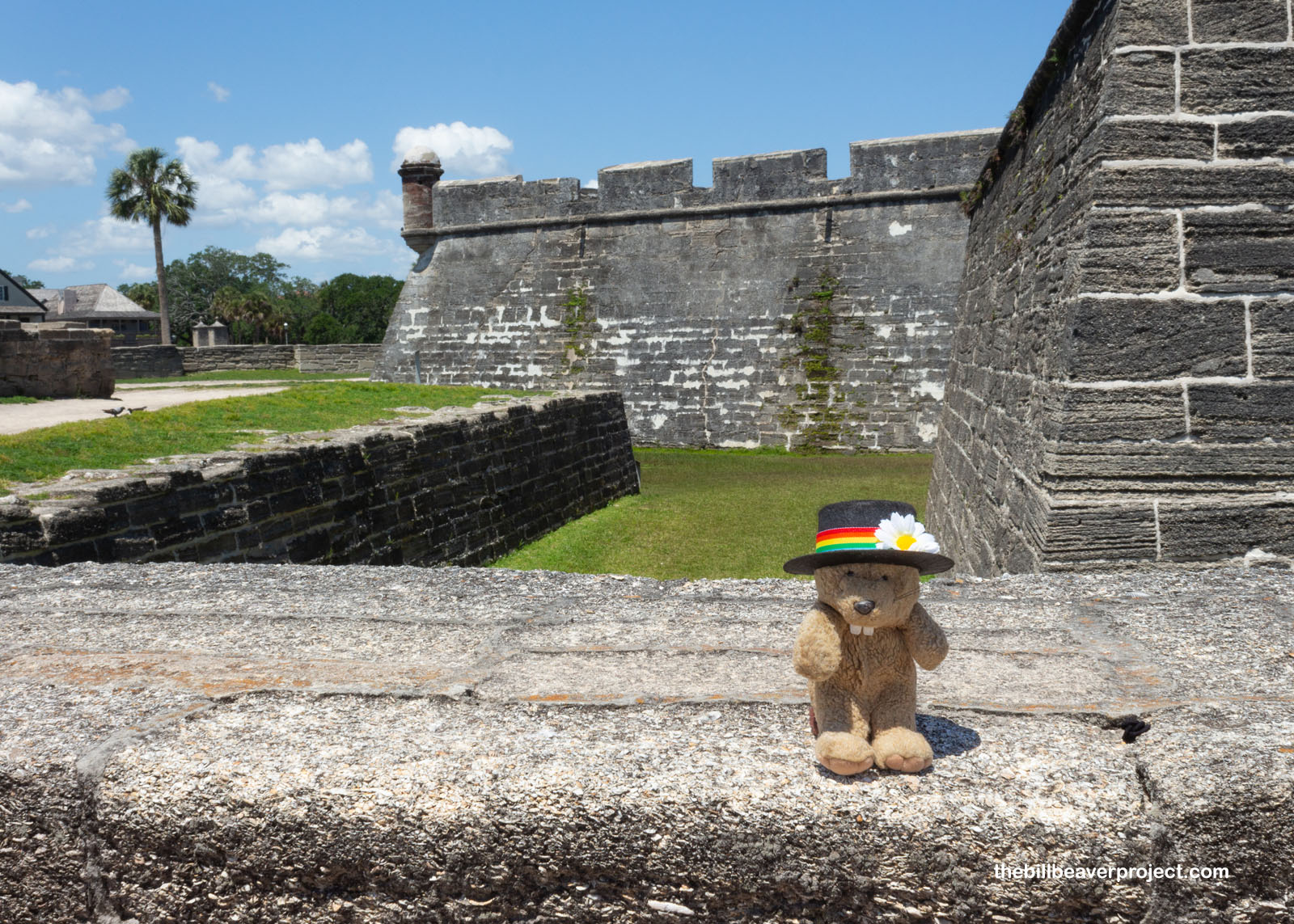 |
As you might guess, while there were skilled craftsmen hired to design and detail, much of the hard work building the Castillo came from forced laborers, whether Native, African, or prisoners of Spanish and even British background. Within its walls, soldiers would rotate through in 24-hour shifts, but since the governor of St. Augustine also lived here, that distinguished it as a castillo, or castle, more than a fort! Over 1,500 people sheltered in here during a 51-day siege by the British!
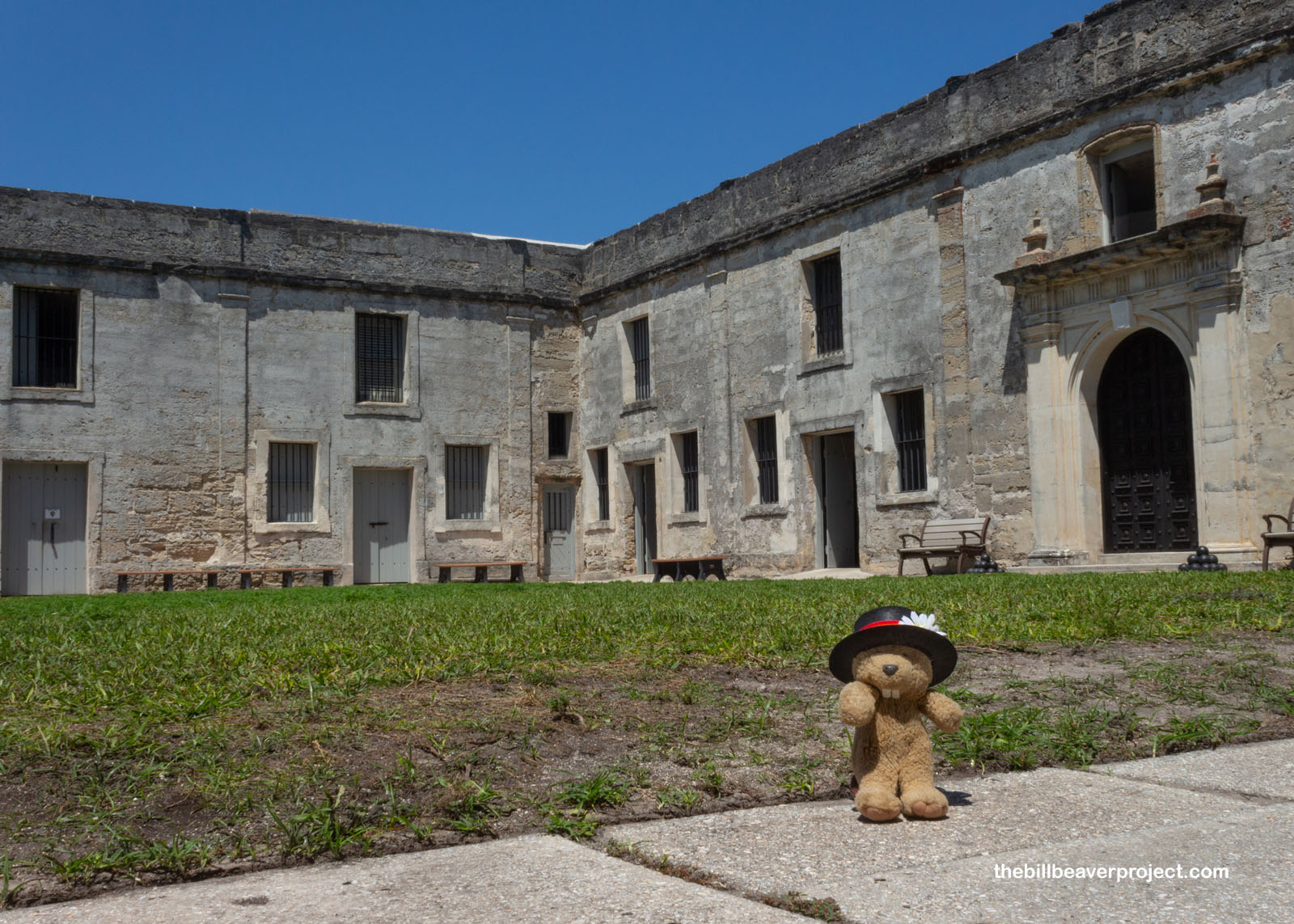 |
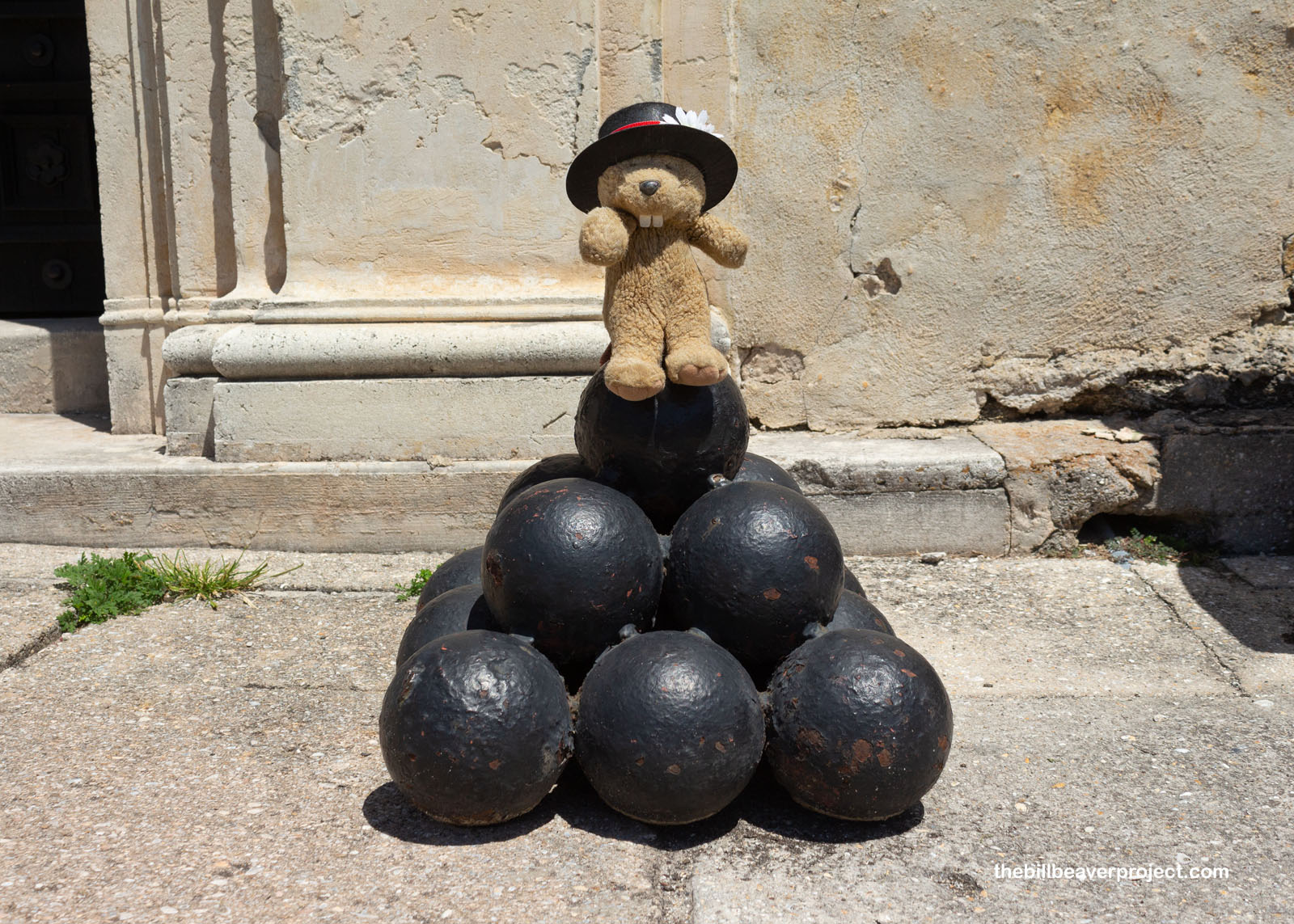 |
They had the tides to thank for sanitation, as seawater would flow in under their toilet seats during high tide then wash away all the poo during low tide! That made the water just offshore pretty gross, but it kept the inside of the fort from smelling!
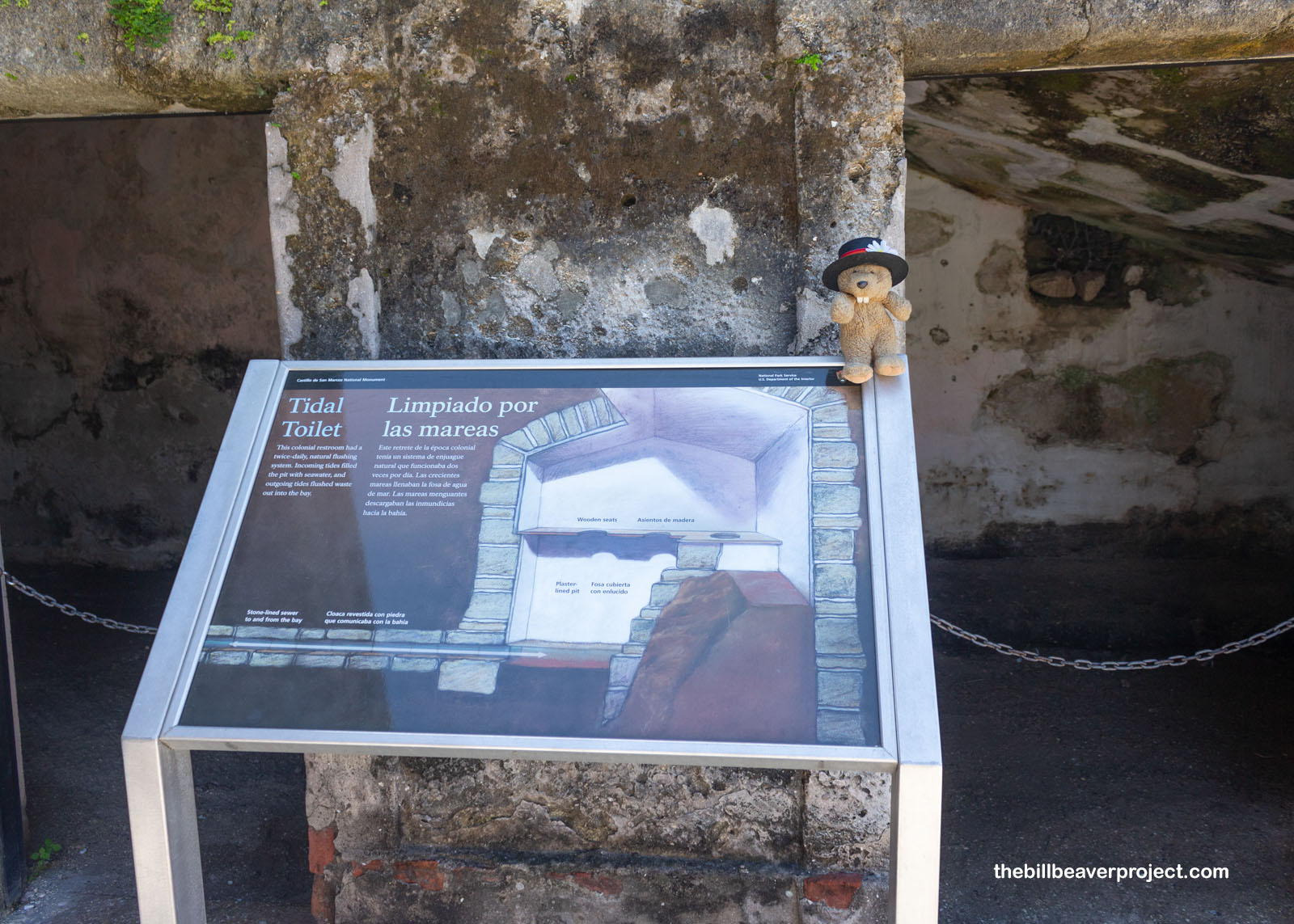 |
From up on top, I could get a peak at some of the castillo’s extremities. At some points were sentry boxes and at the northeastern point was a bell tower to signal approaching danger! These points, though hard to visualize from this level, were designed to give cannon operators the most possible angles for positioning their weapons!
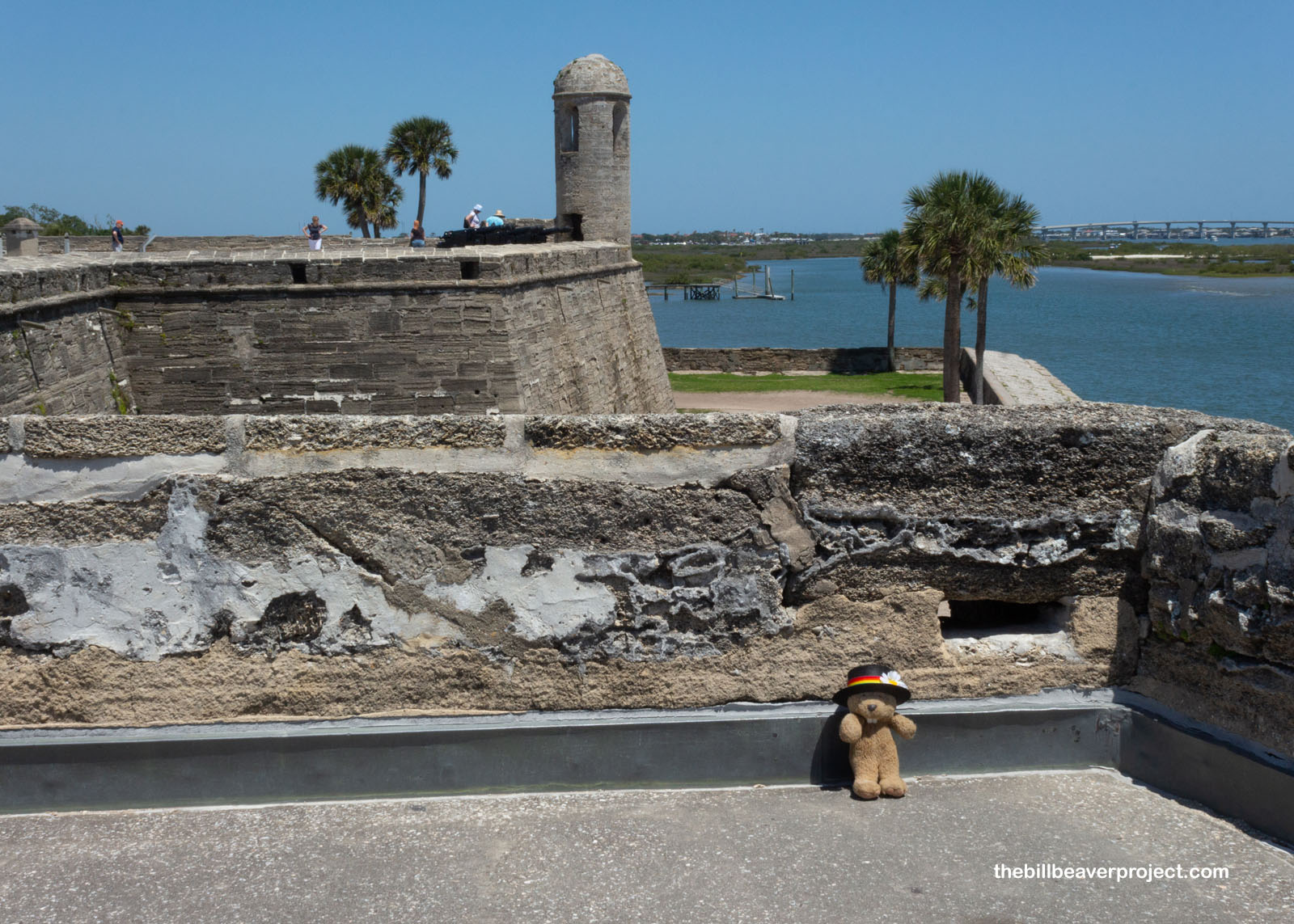 |
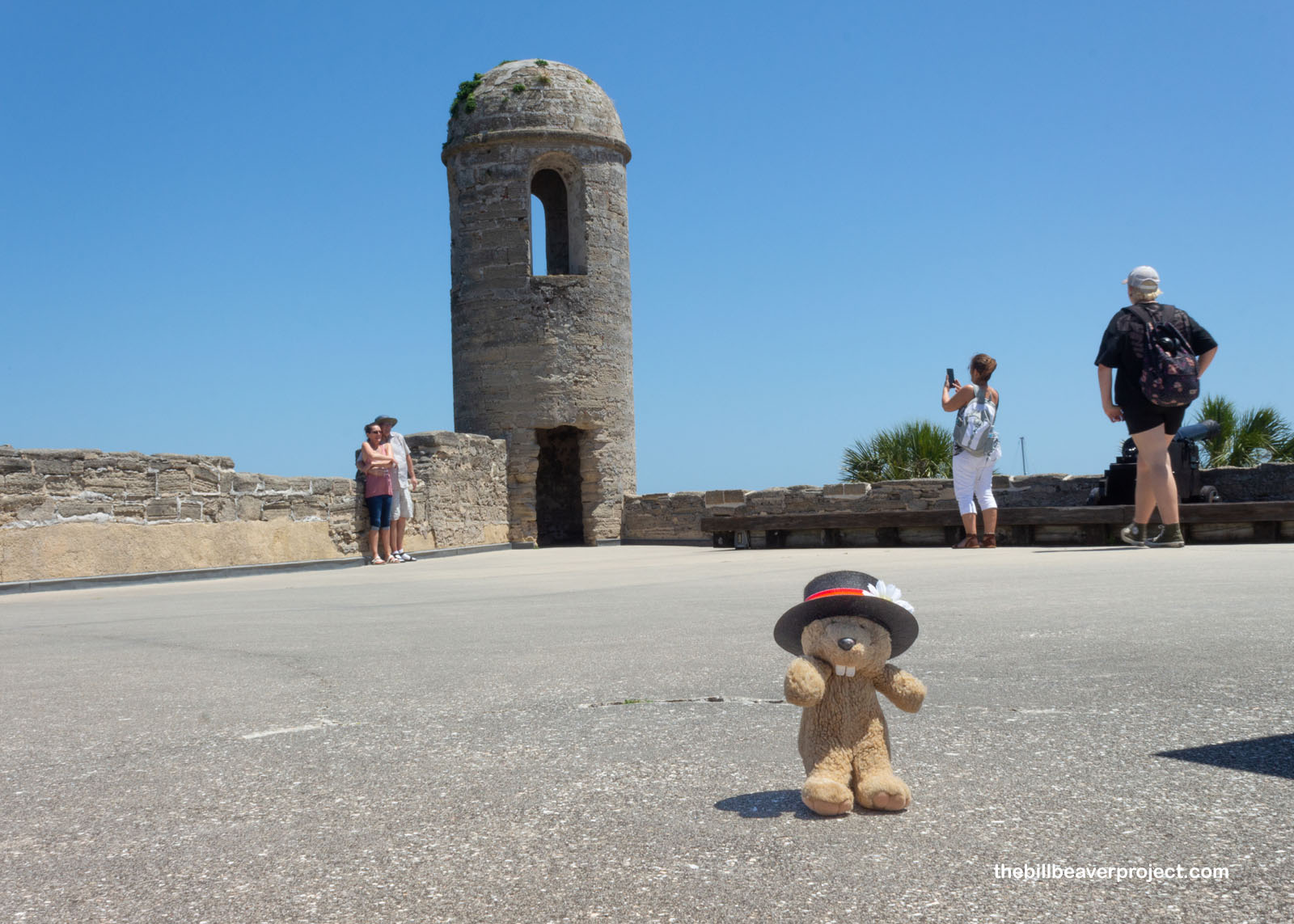 |
And some of those cannons were still on display! The iron cannons, prone to rusting in Florida’s humid climate, have been stabilized, de-ionized, coated in tannic acid, then painted to keep them looking fresh! The bronze ones had very similar color, ornamentation, and “dolphin” handles to the ones I saw last year at Fort Ticonderoga! What better way to illustrate the castillo’s changing of hands? The British took control of Florida in 1763 and renamed the castillo Fort St. Mark, which then returned to Spain for 38 years after the American Revolution. Then the U.S. took control in 1825 and renamed it Fort Marion, which saw battle in the Civil War, housed Florida’s first gold course in 1895, then became a national monument, alongside Fort Matanzas, in 1924!
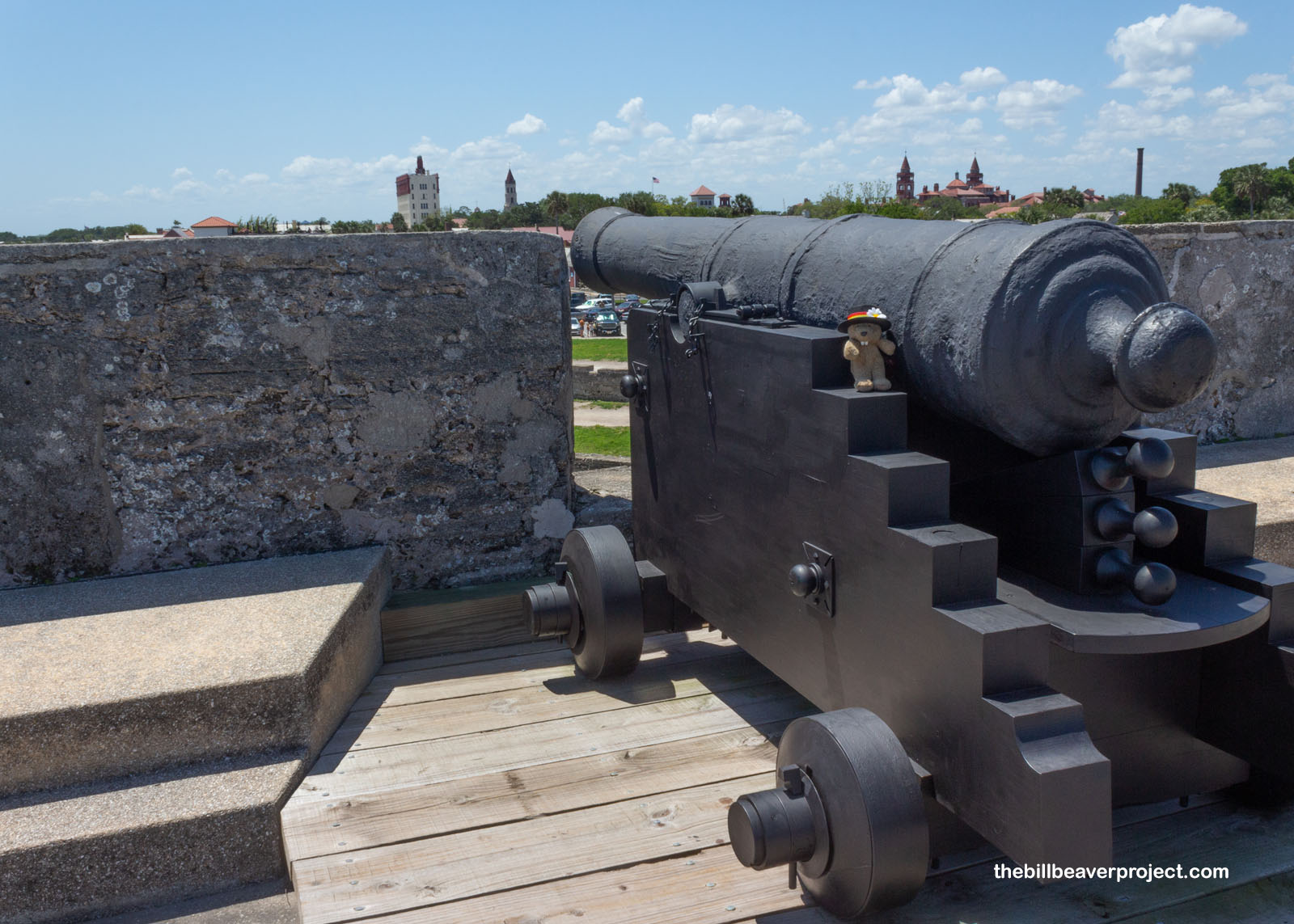 |
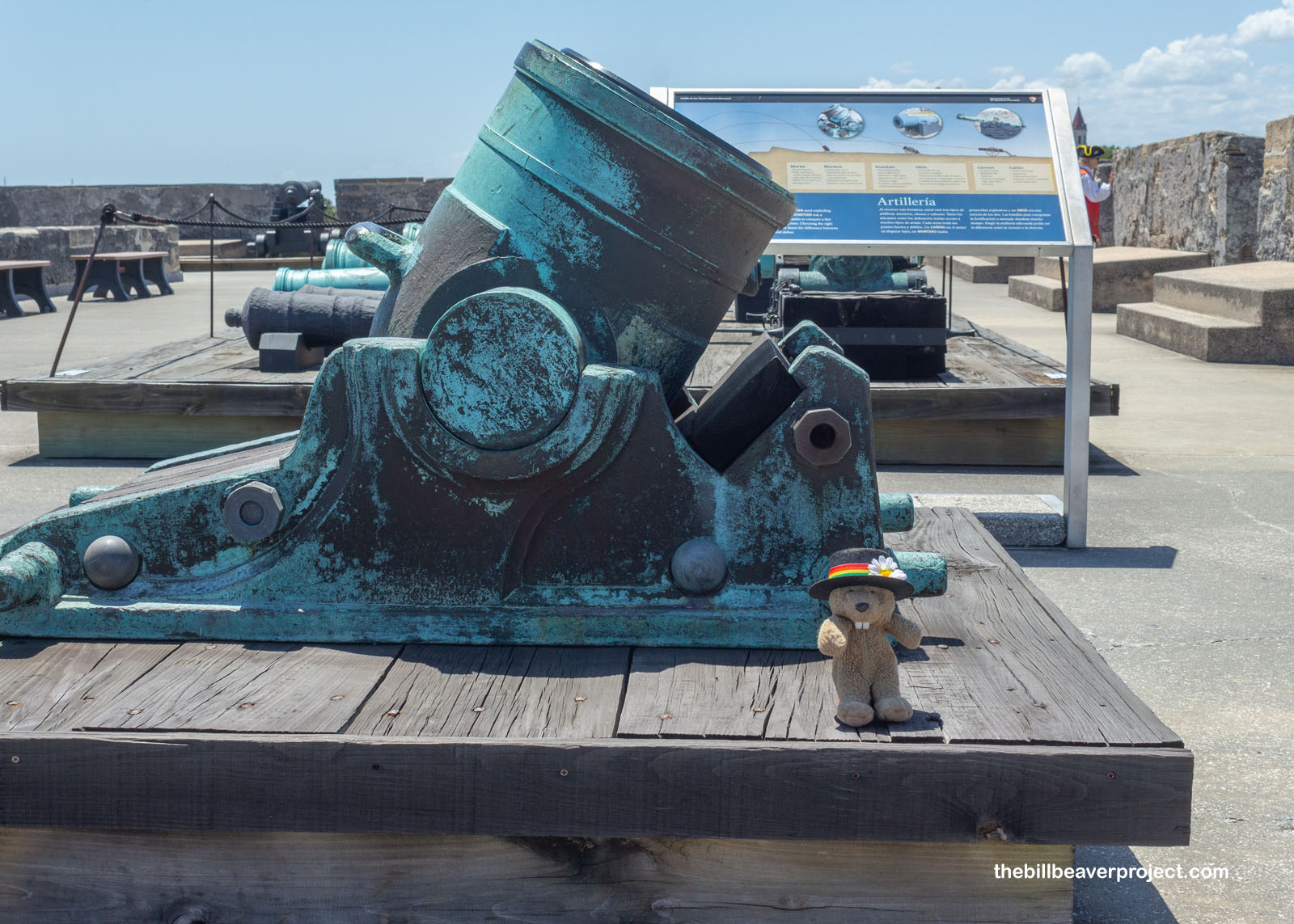 |
After making a full circuit of the fort, I was far from finished with the oldest European city in what’s now the United States. First, I stopped for a mango smoothie at the Crucial Coffee Café, then I headed for a different kind of sip… from history! This was the Fountain of Youth Archaeological Park, where Ponce de Leon believed in 1513 that he’d find immortality!
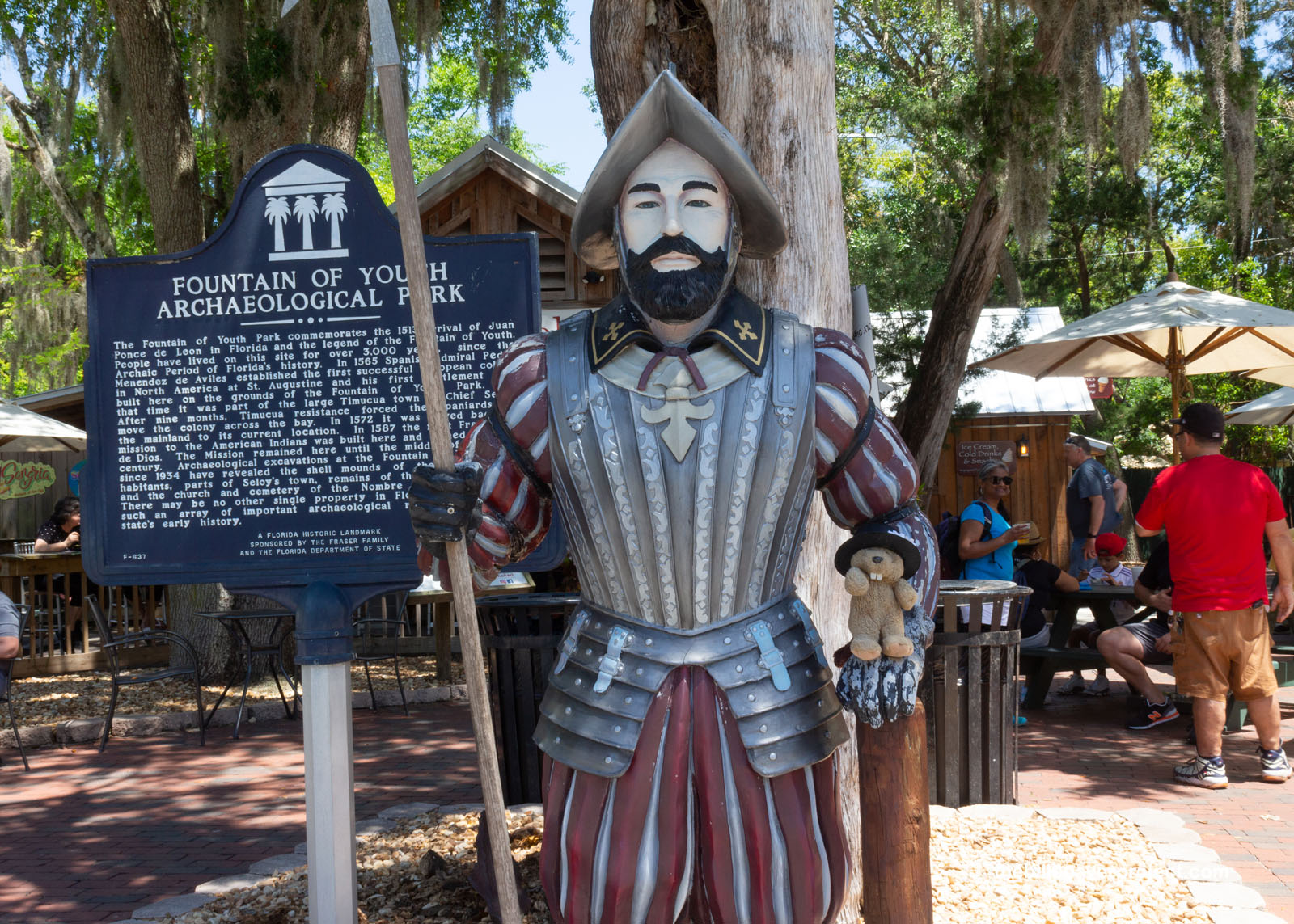 |
Before 1513, this was a Timucua village, led by a cacique named Seloy! The Timucua had inhabited this area since around 4,000 BCE, harvesting the bounty of the sea and gathering nuts, berries, and palm hearts from the forests. Sadly, beyond a few sketches of a few lost paintings and the writings of Fray Francisco Pareja, we don’t know much about how they dressed or how their language sounded, only what we can glean from excavation.
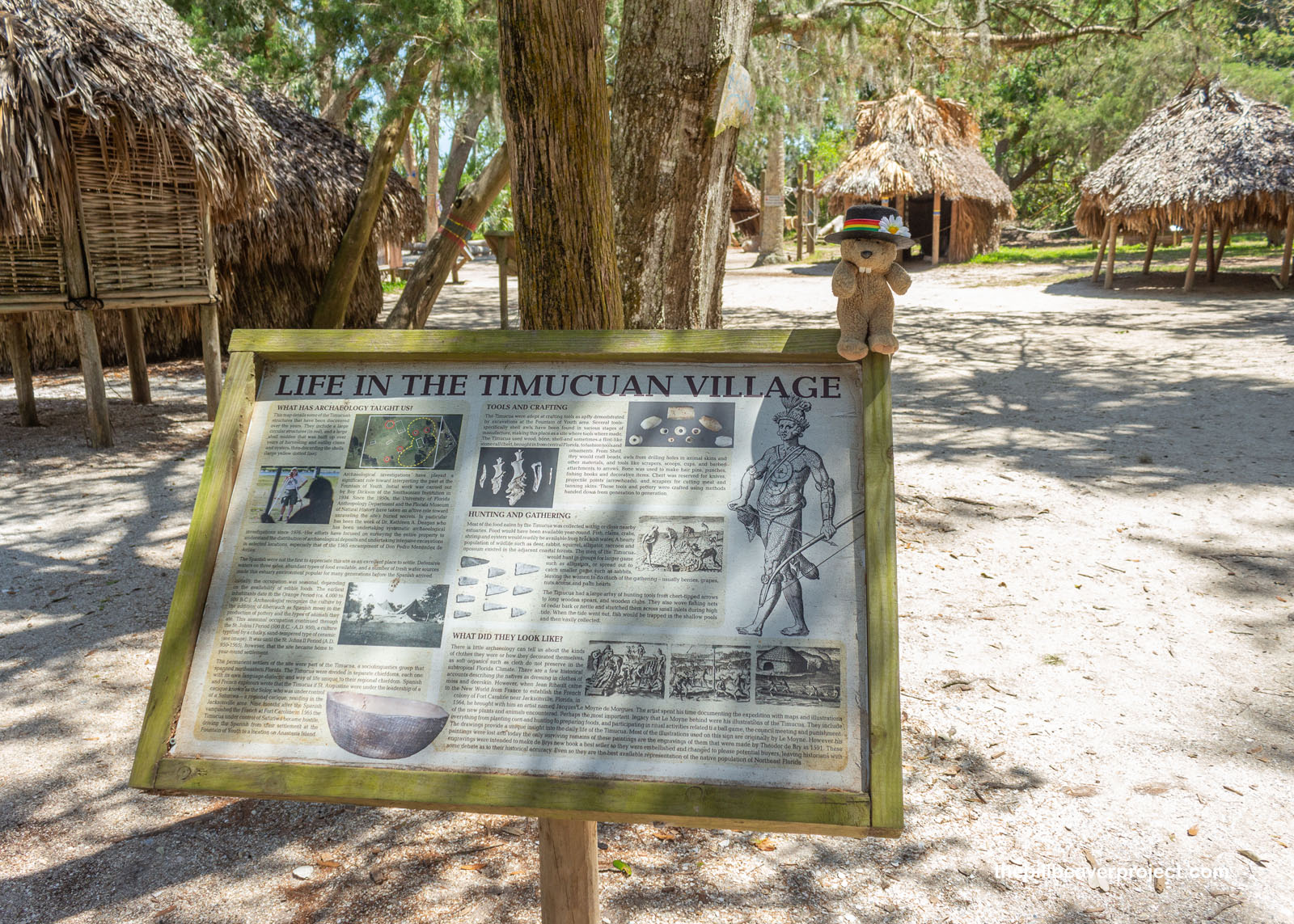 |
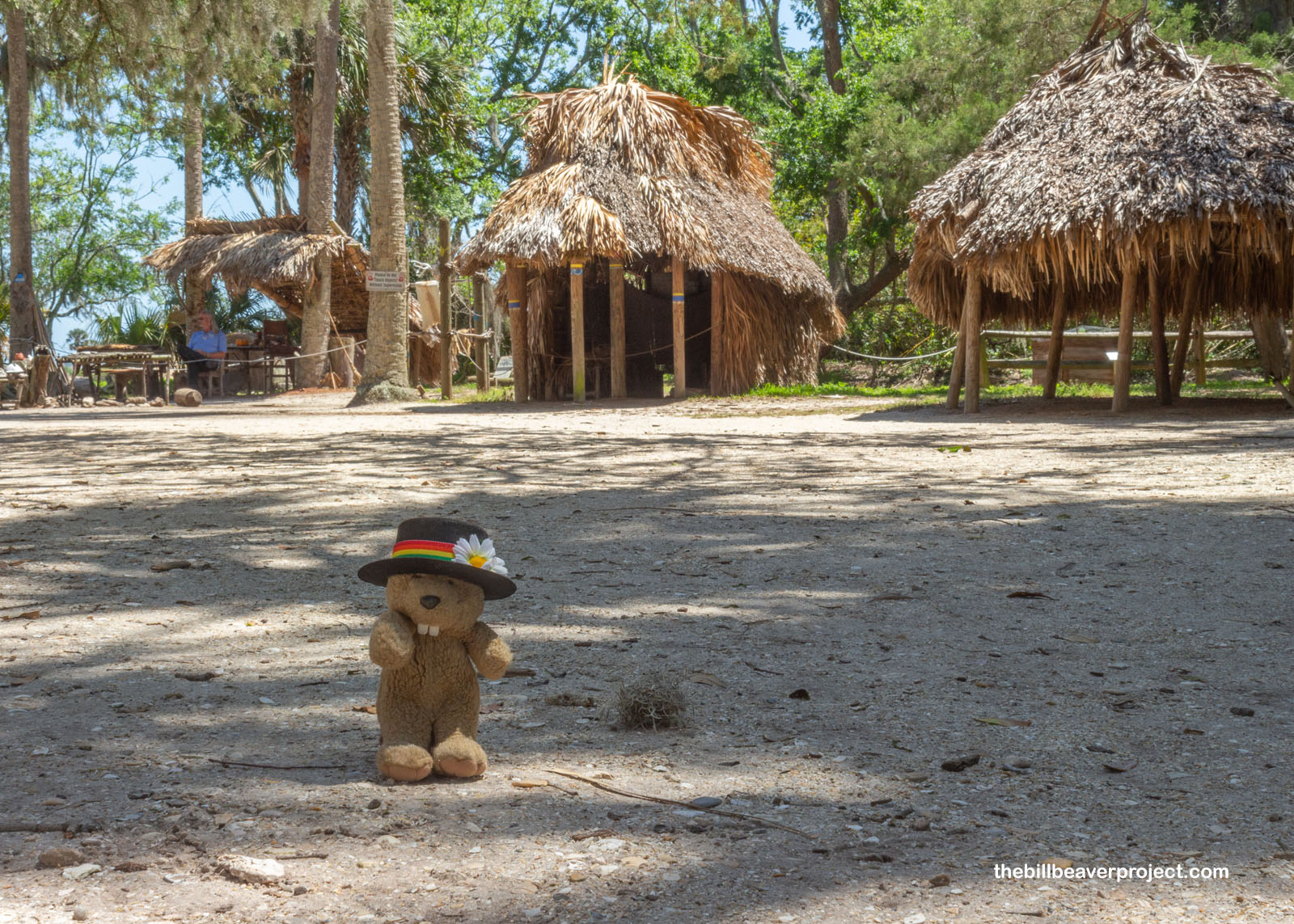 |
That’s because this first Spanish settlement also launched the first Spanish mission in what’s now the United States, founded by 13 Franciscans in 1587. This was La Misión Nombre de Dios! Though Florida’s climate destroyed the original wooden mission centuries ago, in 1934, a gardener planting orange trees for Mr. Walter Fraser uncovered some Timucuan skeletons! Later excavations revealed over 4,000 burials, whose positions revealed the original mission’s foundation. Even with their language wiped out, these folks had a lot to communicate about their era!
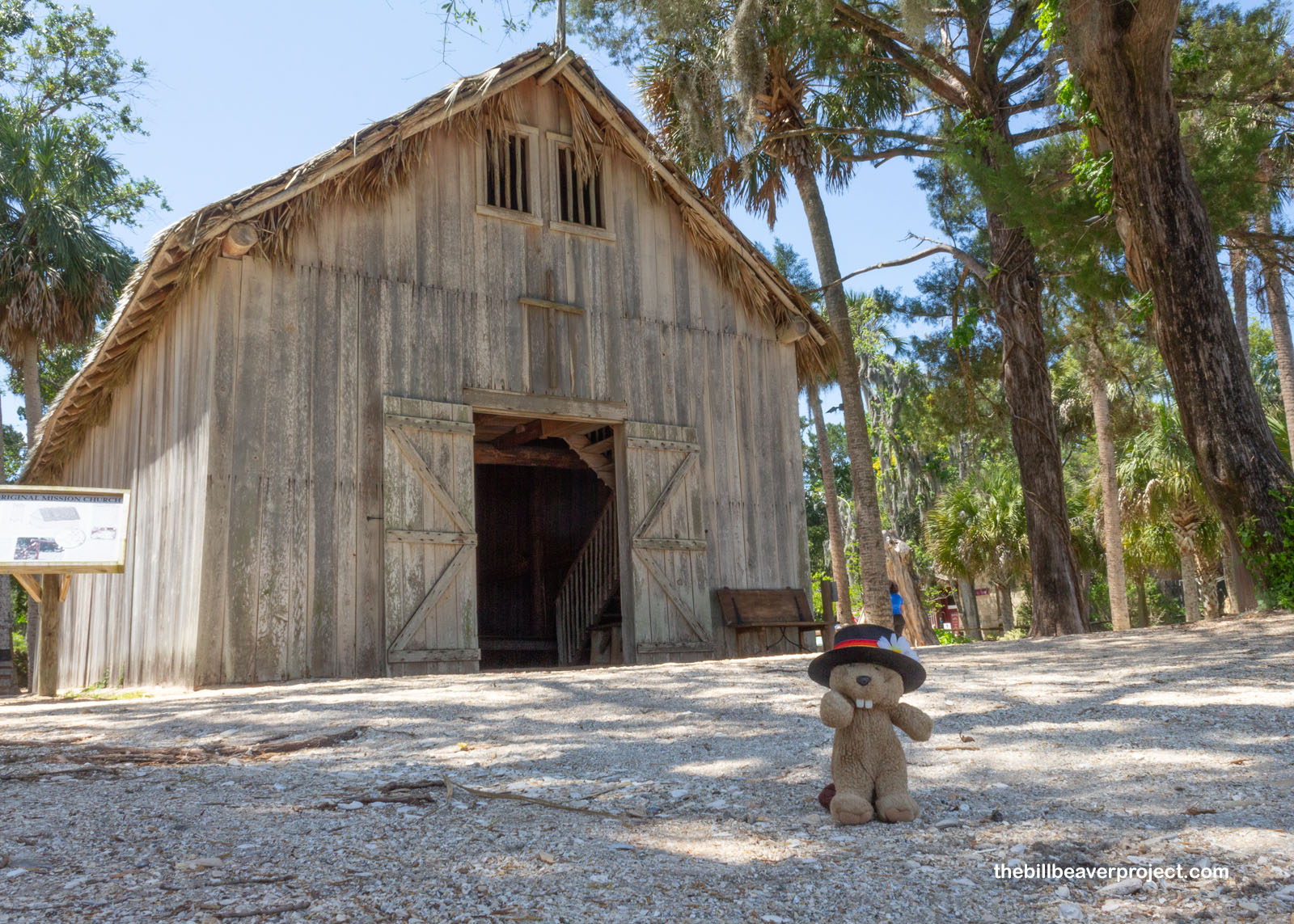 |
So, commemorated here in this park were, on the one hand, Chief Saturiwa, who governed thirty different tribes in the area and helped Pedro Menendez de Aviles set up his new colony of San Agustín in 1565. On the other hand, there was Juan Poncé de León, who first came this far west with Columbus’ second voyage in 1493, who massacred the Taíno at Higüey in 1504, and who plundered the golden placers of what’s now Puerto Rico starting in 1508! After narrowly winning a battle with Columbus’ son, Diego, for the governorship, Señor Poncé de León decided he was better off exploring some more. Besides, King Fernando II said any lands he conquered to the north would be his for life!
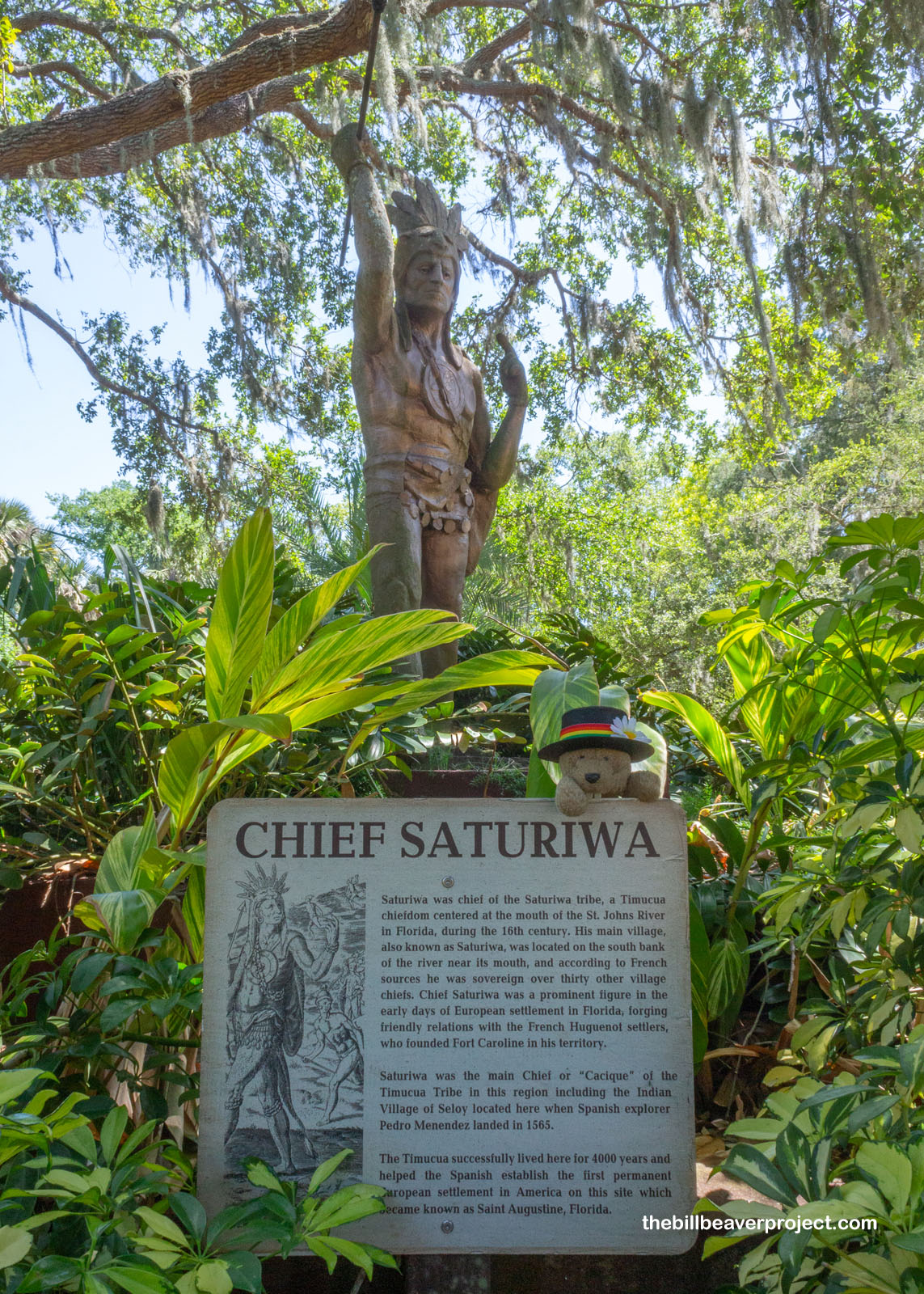 |
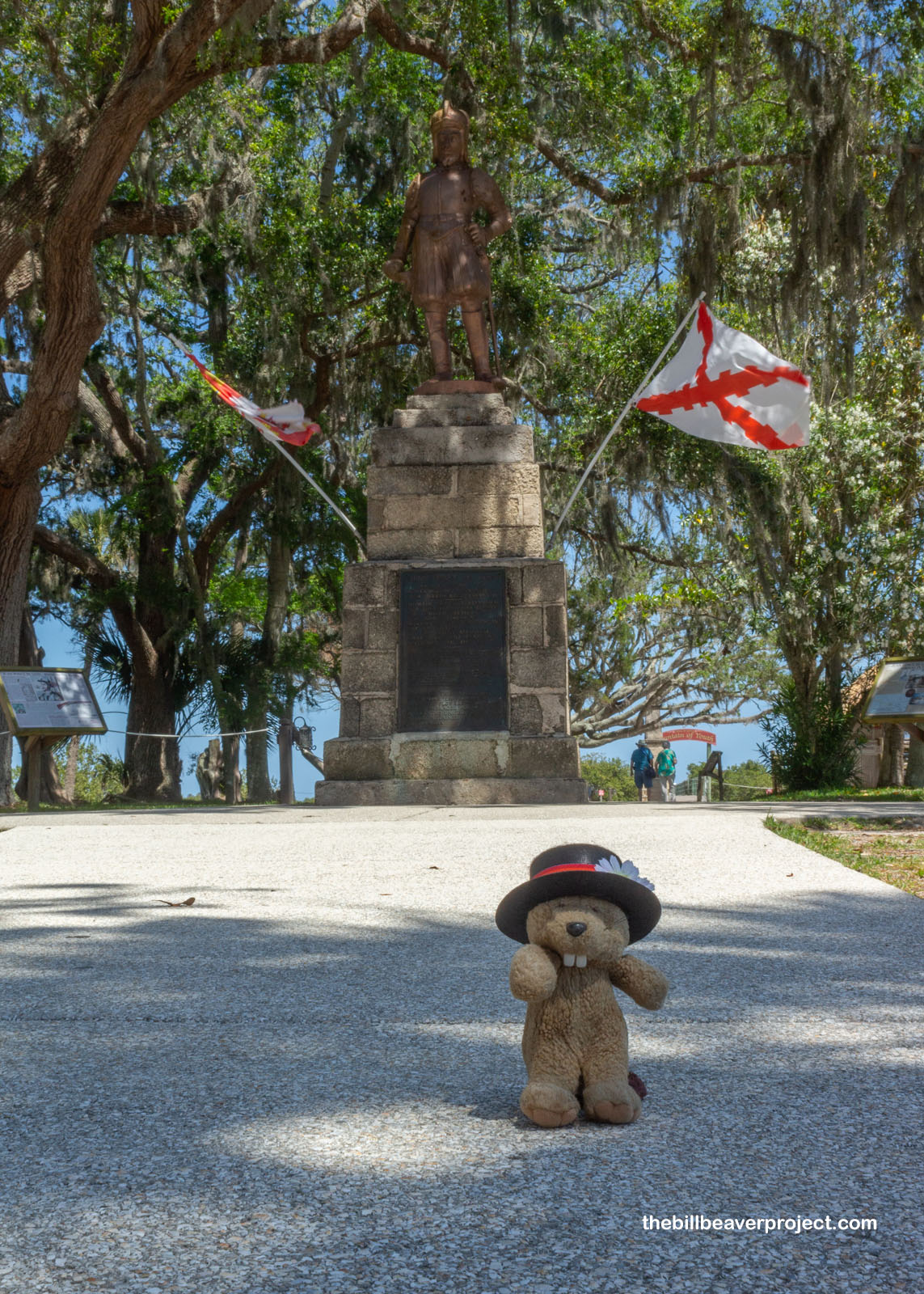 |
So, the Poncé de León expedition left Puerto Rico on March 4, 1513, approached a land he called La Florida because it was close to Easter, a.k.a. Pascua Florida, and set foot on various parts of both sides. While we know he was looking for gold and glory, a popular myth sprung up in 1535 that he’d been searching for the waters of Bimini, or the Fountain of Youth!
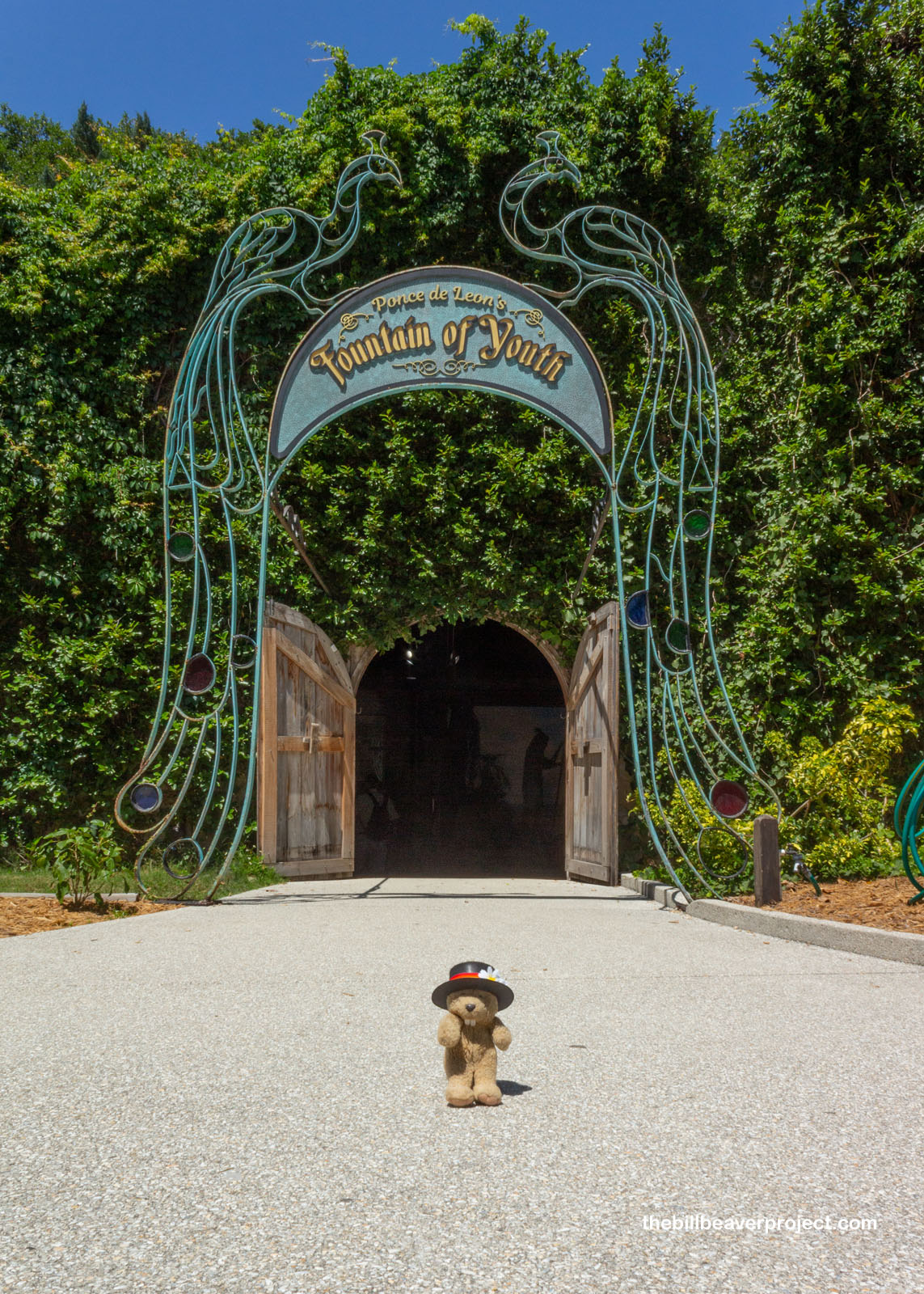 |
In any case, there is a natural spring at Fountain of Youth Archaeological Park, a historical landmark on its own, drawing in visitors since at least 1868! It’s part of an enormous aquifer that spans most of Northern Florida, and it would most likely have been flowing at the time of the Poncé de León expedition. They had cups available, so I figured, what the heck, I may as well have a sip! Do I look any more youthful?
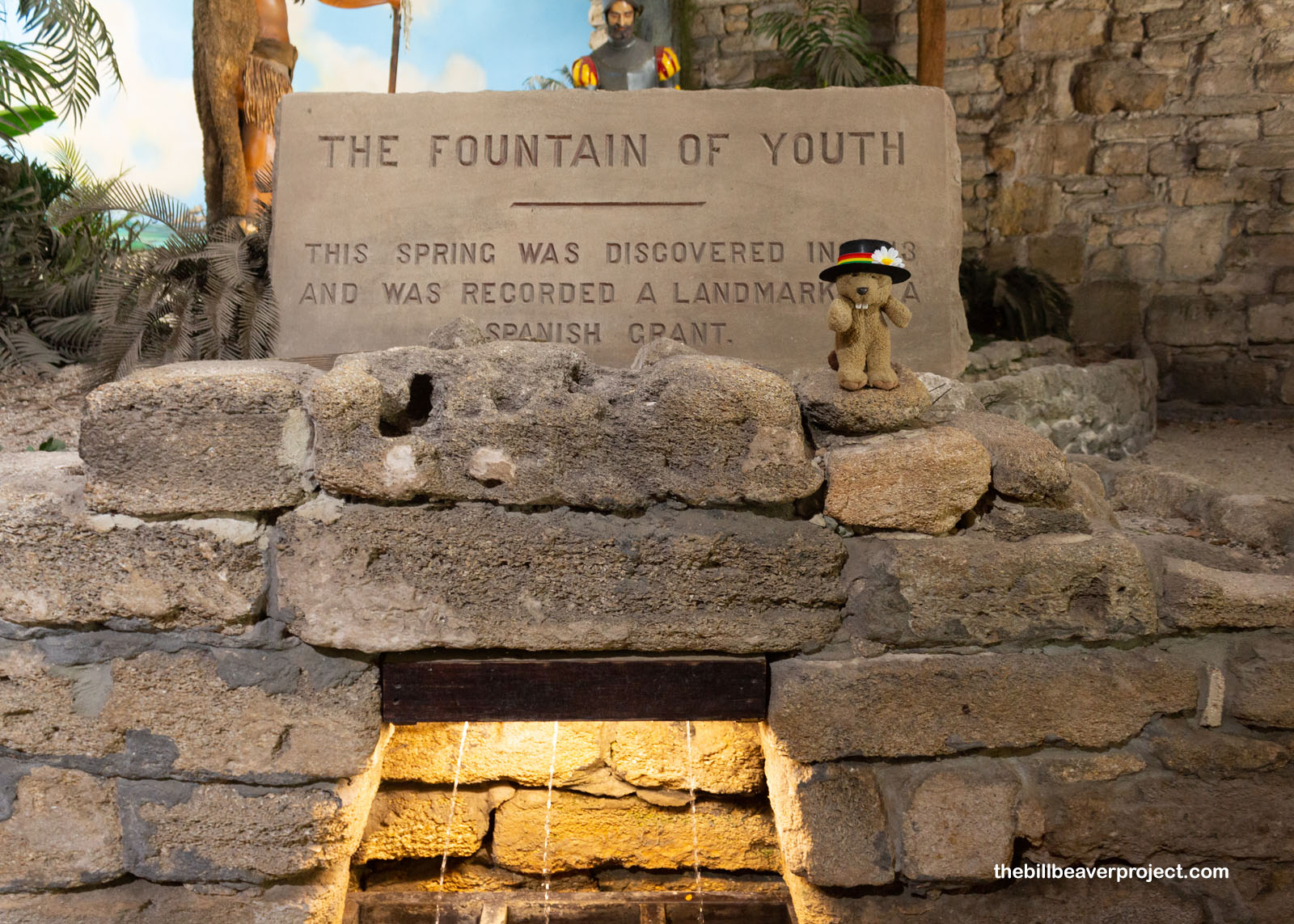 |
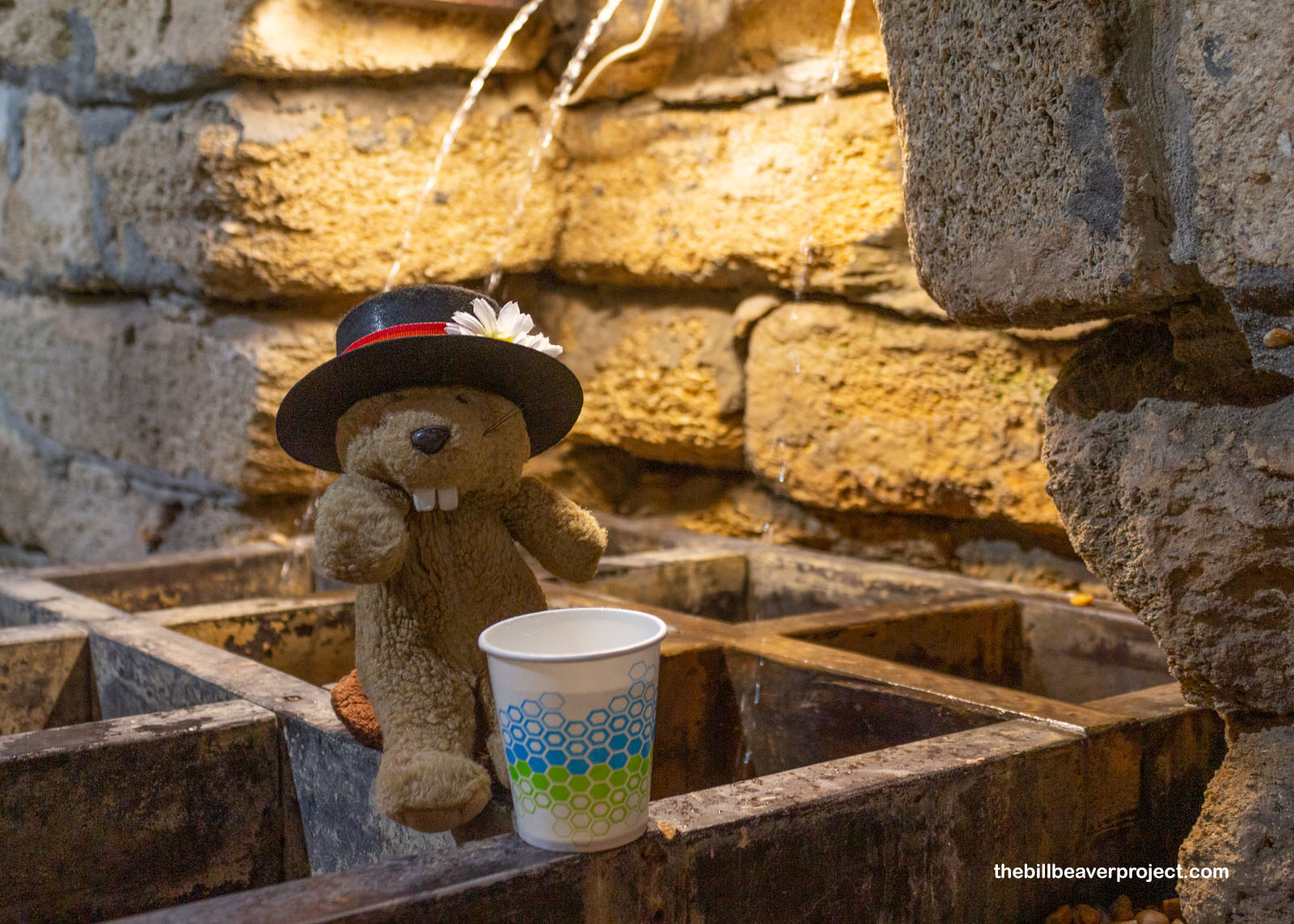 |
Maybe it was all my youthful energy, but I made it to my final stop for the day with plenty of time before closing! Here is where the Spanish empire met a touch of the French, a place called Fort de la Caroline! Founded in June of 1564, it was a big reason why the Spanish set up St. Augustine the following year!
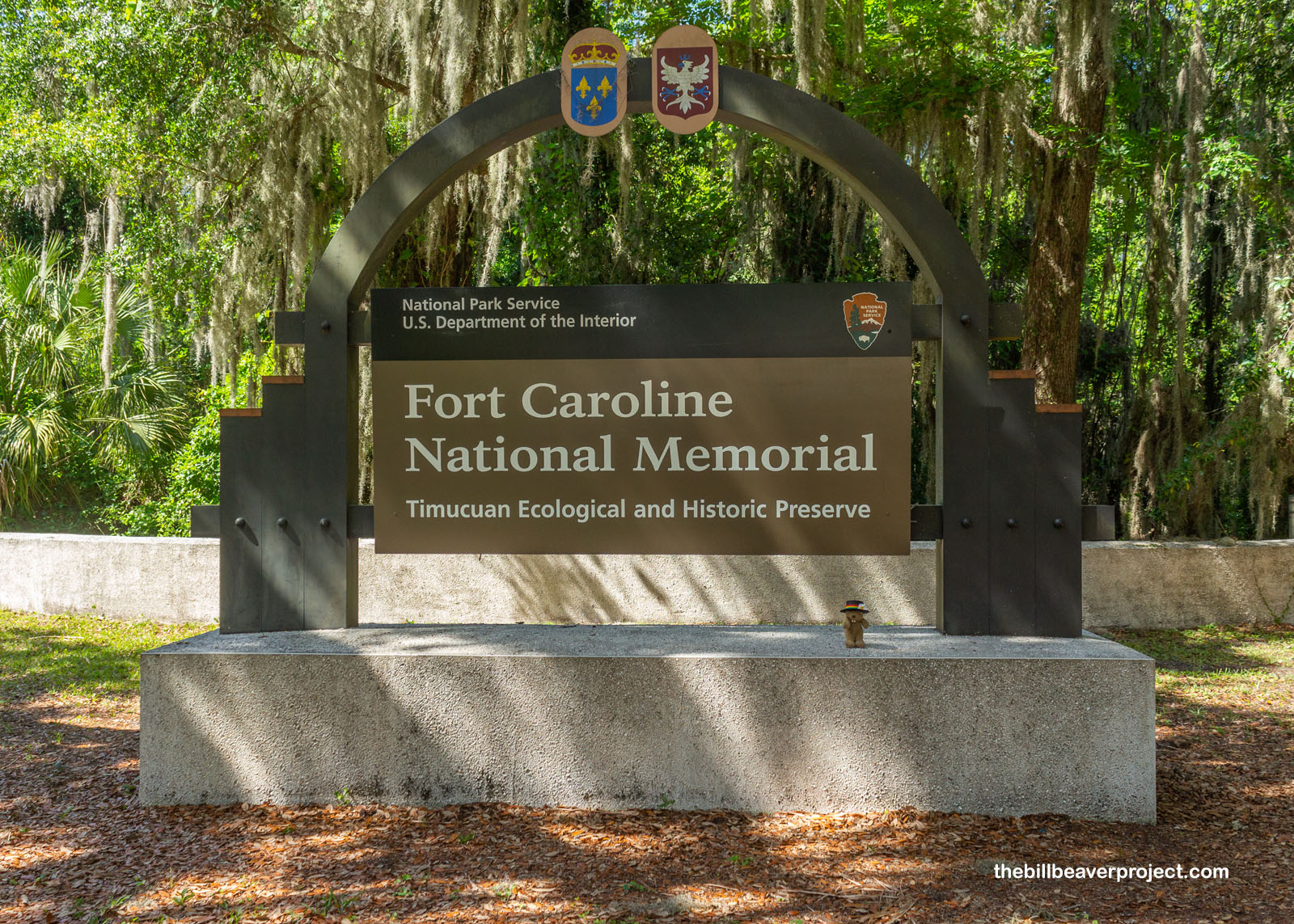 |
Fort Caroline is a national memorial, not a monument or historical park, because the Spanish obliterated it the year after it was founded! Why? Well, there were two things the Spanish wouldn’t tolerate in their colonial endeavors: the French and non-Catholics, and it just so happened that these fort builders were here to set up a refuge for Protestant Huguenots, under the name of the French king, Charles IX!
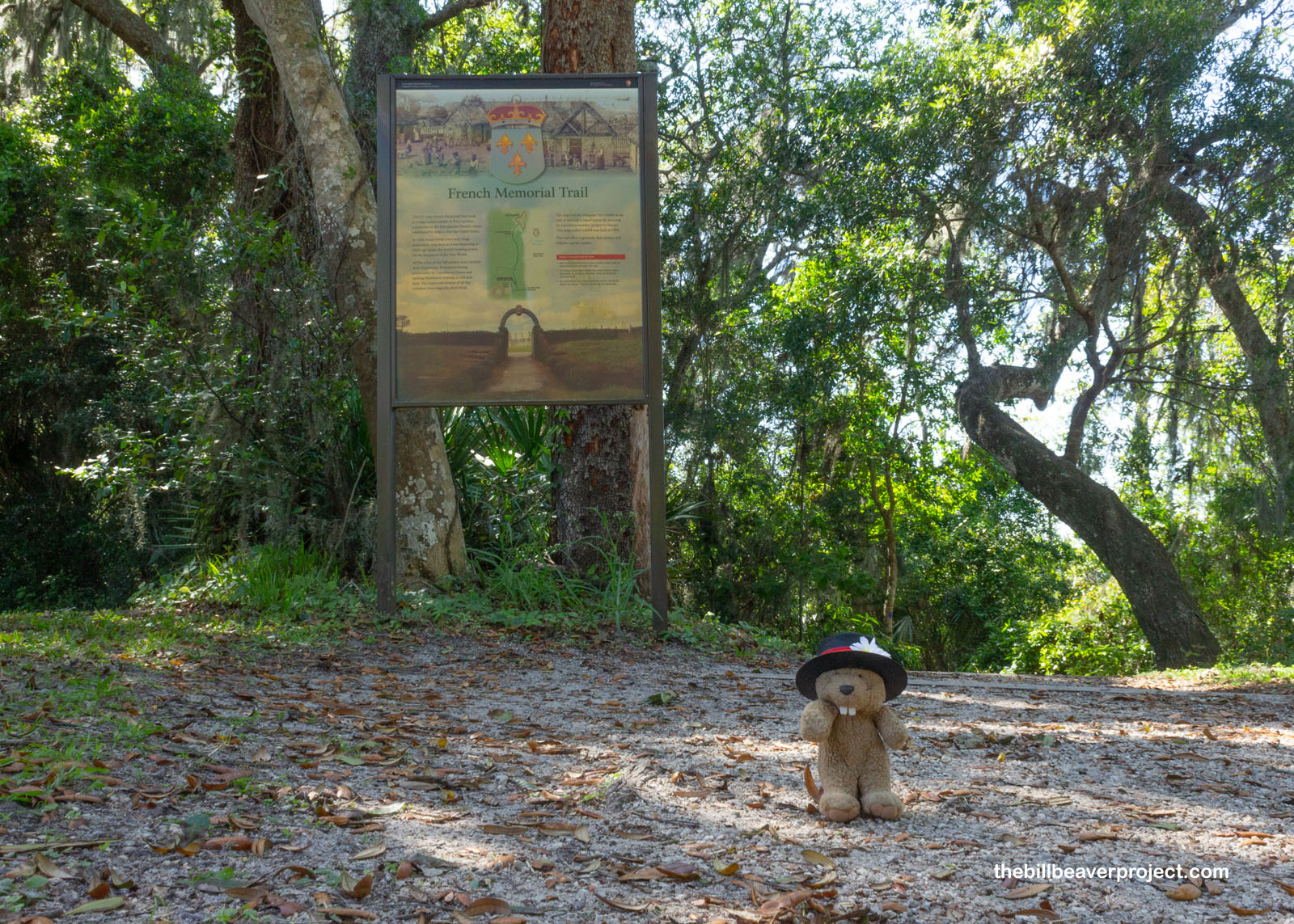 |
Like in St. Augustine, these early French settlers, led by Rene de Goulaine de Laudonniere, found ready help from Chief Ashore and his Timucuan tribe, under Chief Athore, whose demonym is still attached to Timucuan Ecological & Historical Preserve, which surrounds the memorial! The residents of Fort Caroline did not have enough time to engage with the tribe much after that, but what time they did have didn’t go so well.
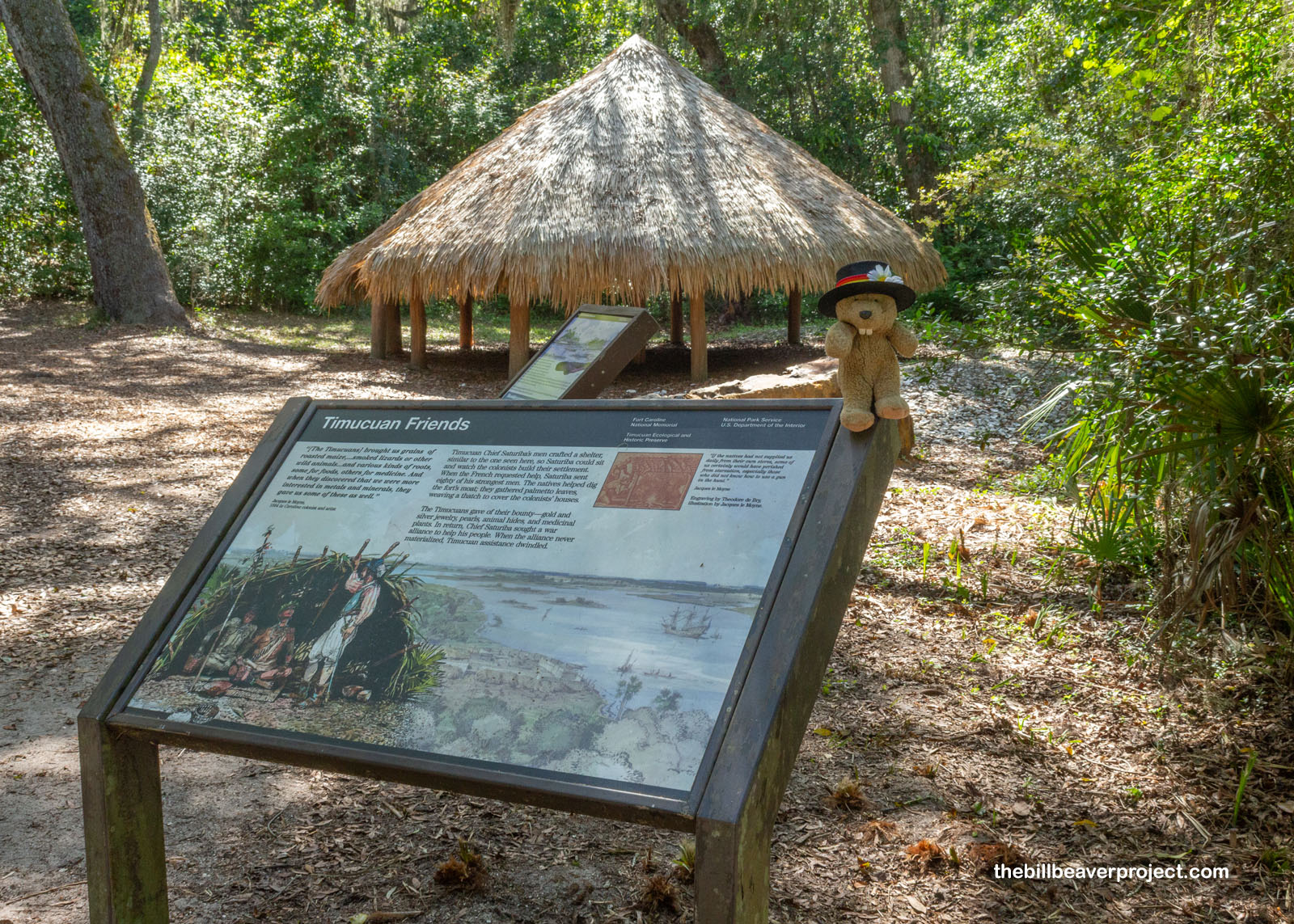 |
So these colonists quickly annoyed their Timucuan hosts, who stopped helping them find food. There were two mutinies, and some of the mutineers fell into Spanish hands, which gave away the fort’s location. Shortly after founding St. Augustine, Admiral Pedro Menendez took 500 soldiers north to what’s now Jacksonville, and attacked the 600 or so French colonists!
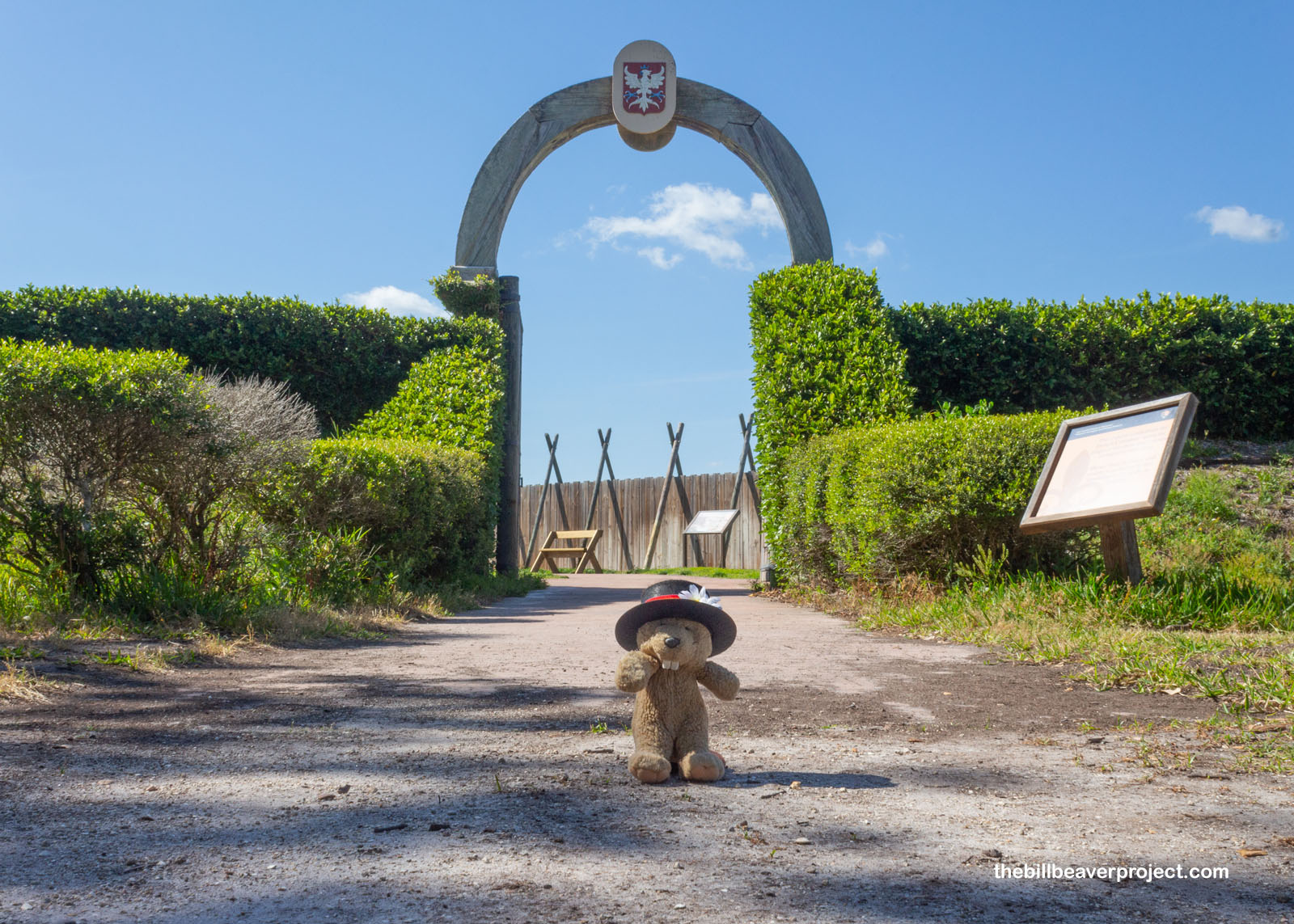 |
About 50 escaped to sea, and about 60 women and children were spared. The Spanish then tracked down a French fleet that had meant to attack St. Augustine but gotten shipwrecked, and killed all but a few self-proclaimed Catholics and musicians. They named this spot Matanzas, which brings this coastal adventure full circle!
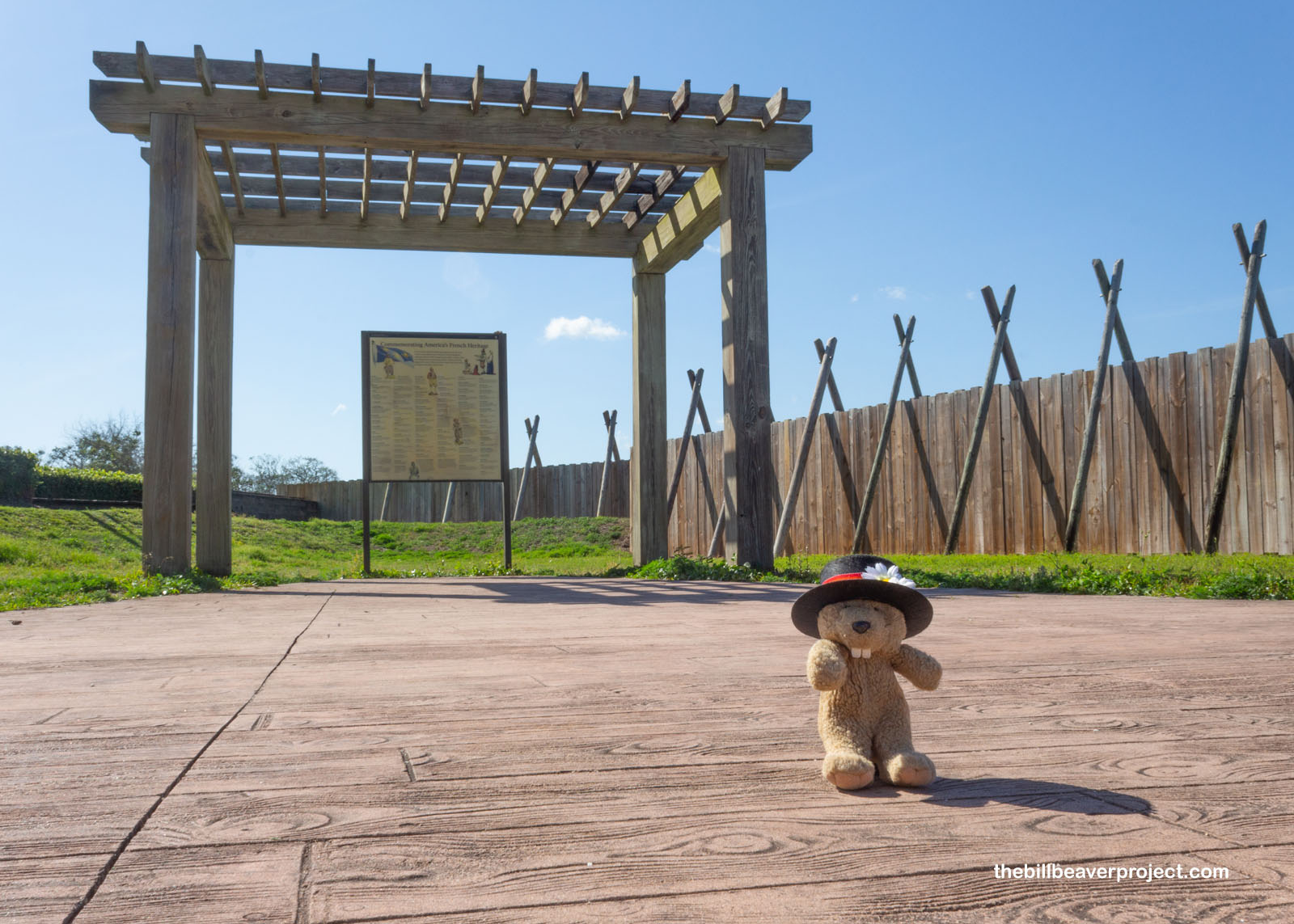 |
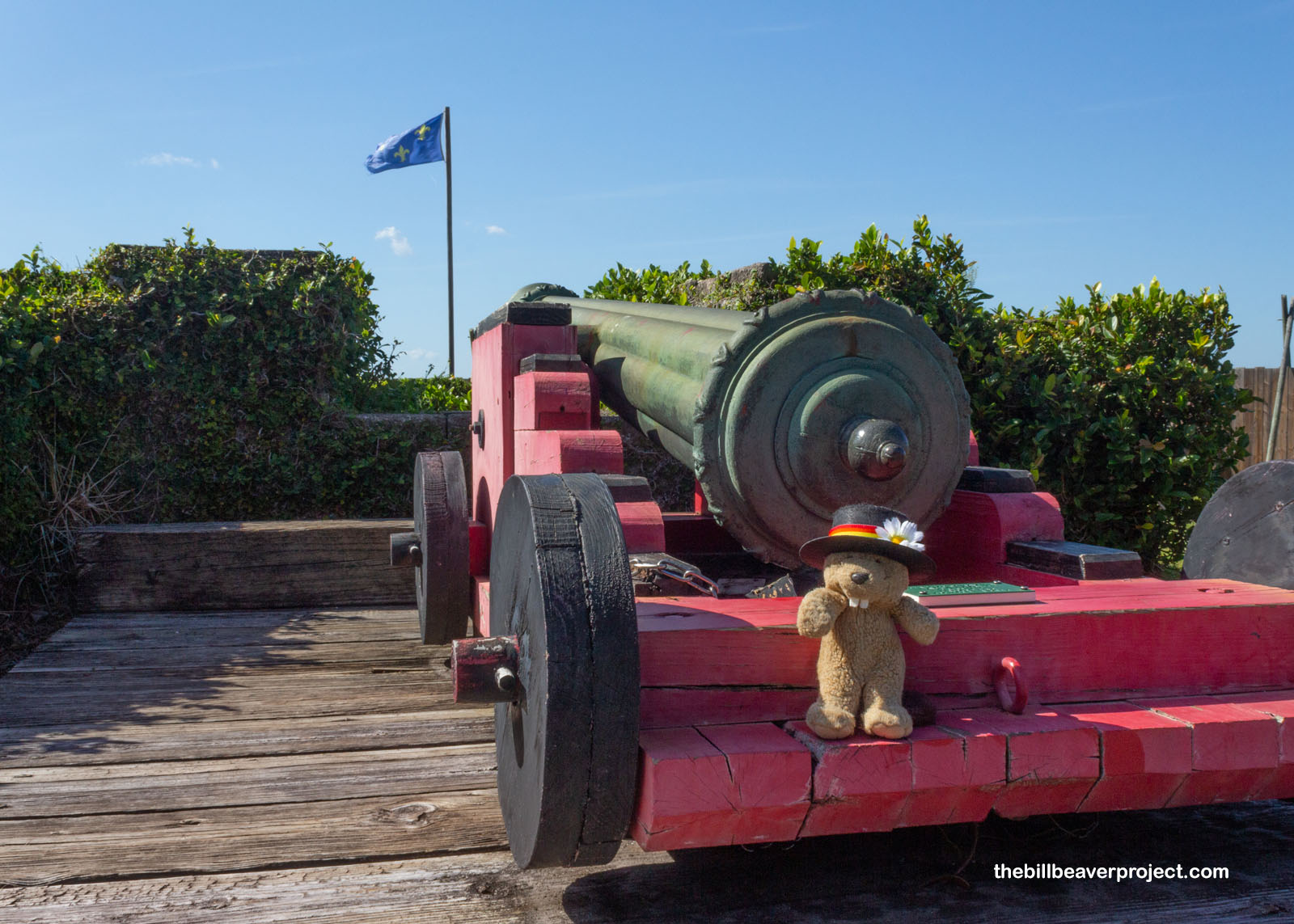 |
A short way down the road was a monument commemorating Jean Ribault, the leader of that first French foray in 1562, who set up a stone column back then to claim Florida for France. This column is not the same one, but a thrice-moved construction funded by the Daughters of the American Revolution and designed by Charles Adrian Pillars in the 1920s. Today, it fits the theme of a memorial to a place that has been lost!
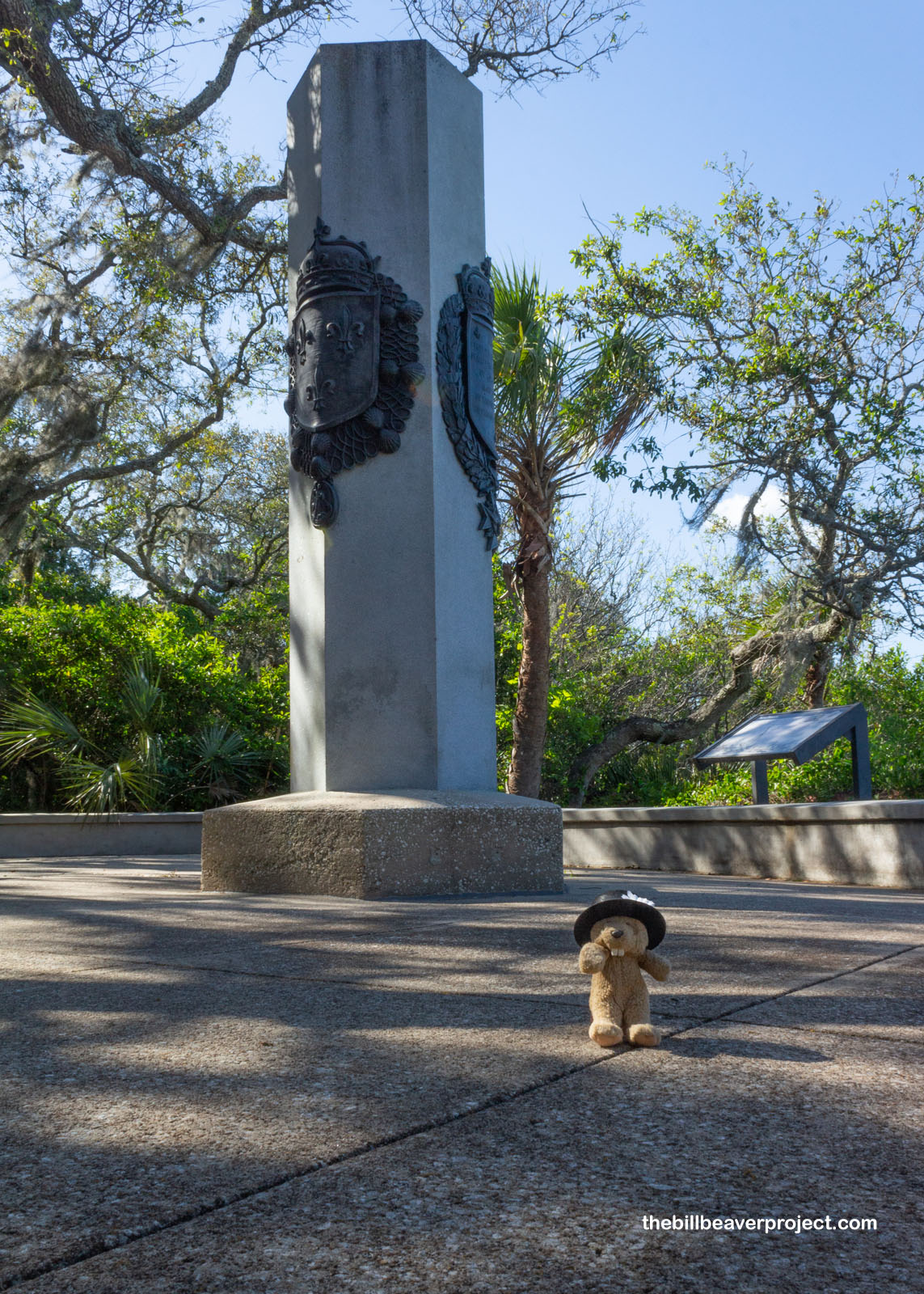 |
With the historic part of the park closed behind me, I had a chance to catch my breath, an easy thing to do at sea level when surrounded by lush vegetation! The perfect spot for it was the Spanish Pond trail, which preserves the thick forest as the French and Spanish may have seen it on arrival!
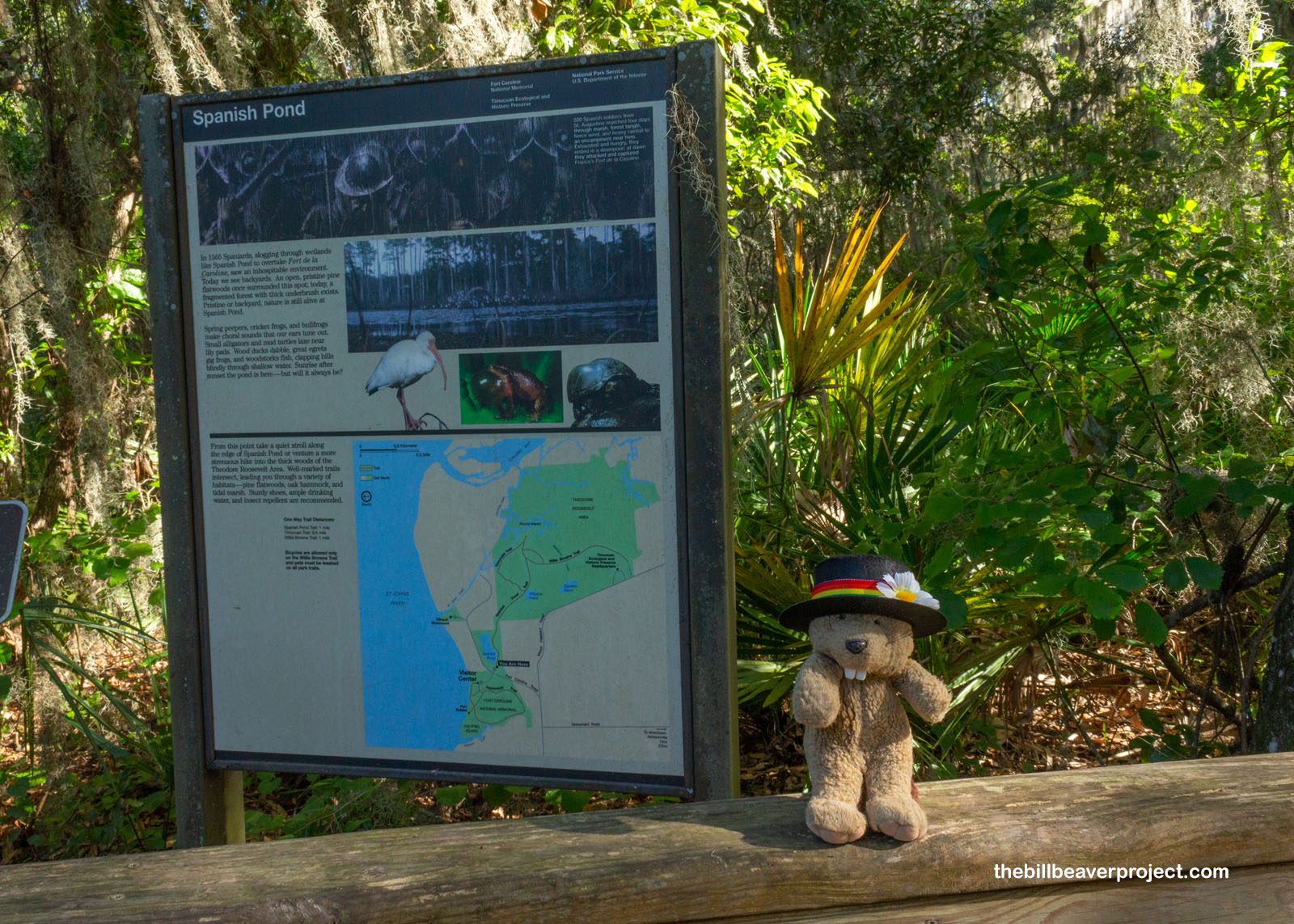 |
It was an easy stroll with some boardwalk and flat ground. It kind of reminded me of walking in Khao Yai National Park, but these trees were mostly slash and longleaf pines, making up a terrain called pine flatwoods, which make up 50% of Florida’s natural land! The shady parts lining the trail were jam-packed with saw palmettos, leading into another neat kind of ecosystem called maritime hammock!
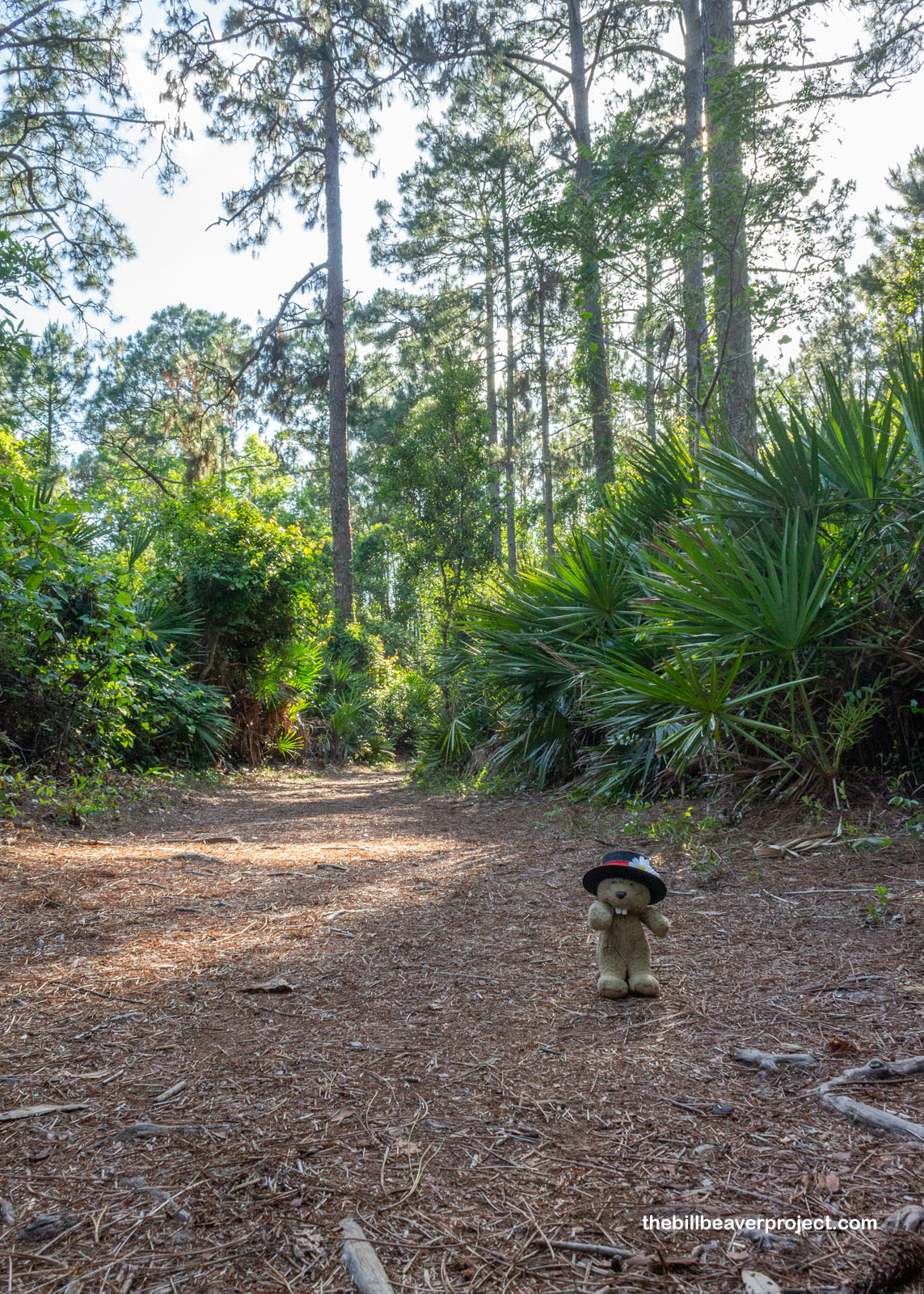 |
Here I paused to enjoy the evening light in the presence of a majestic oak tree, draped with Spanish moss. After running around through history, I think it’s important to take some time enjoying the quiet whisper of the wind in the trees, and that’s just what I did, until my tummy started to rumble.
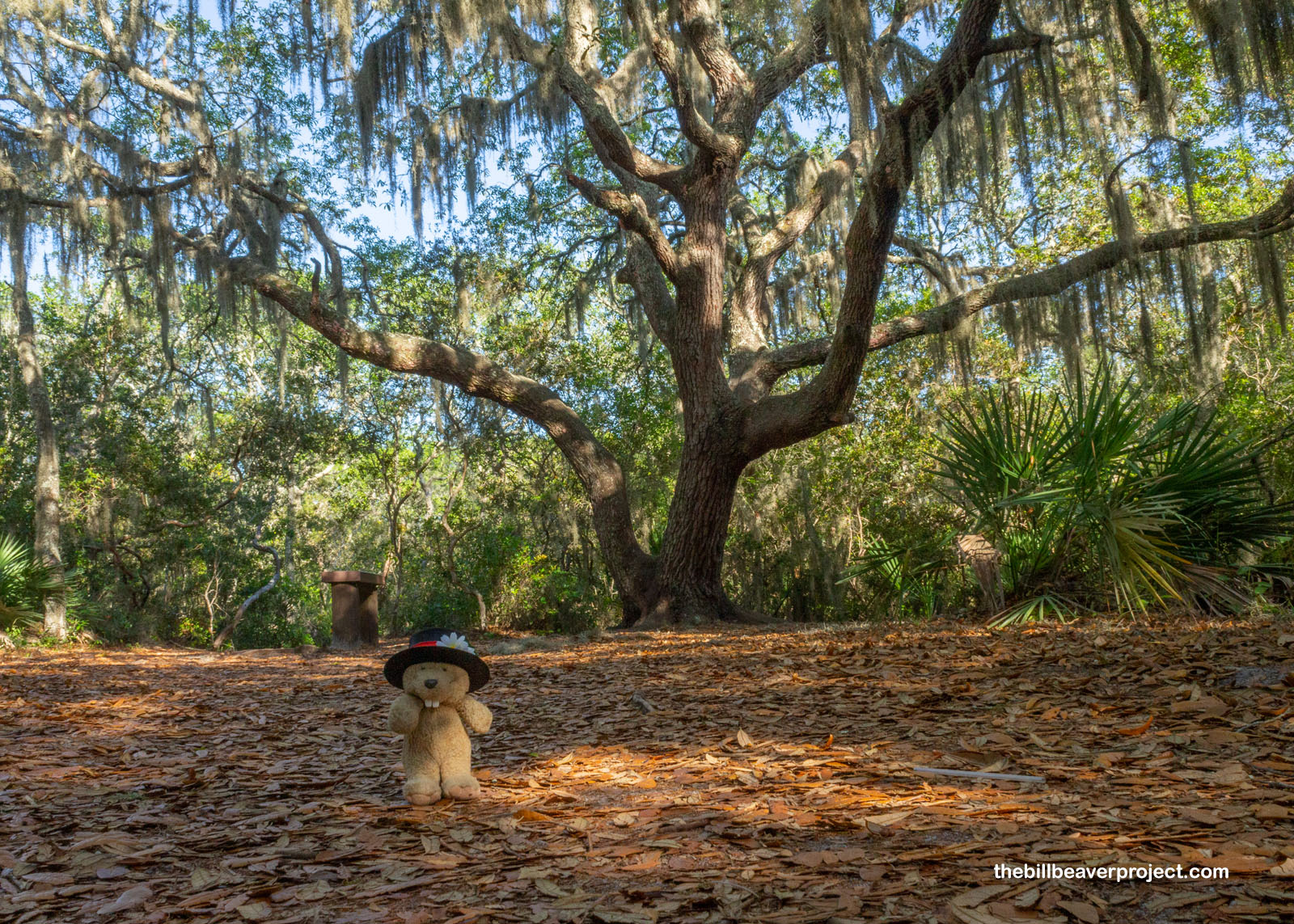 |
So, I headed into Jacksonville, ordered some veggie chow mein, and looked through a bunch of photos from my room at the Hampton Inn, which is well known for its chocolate chip cookies!
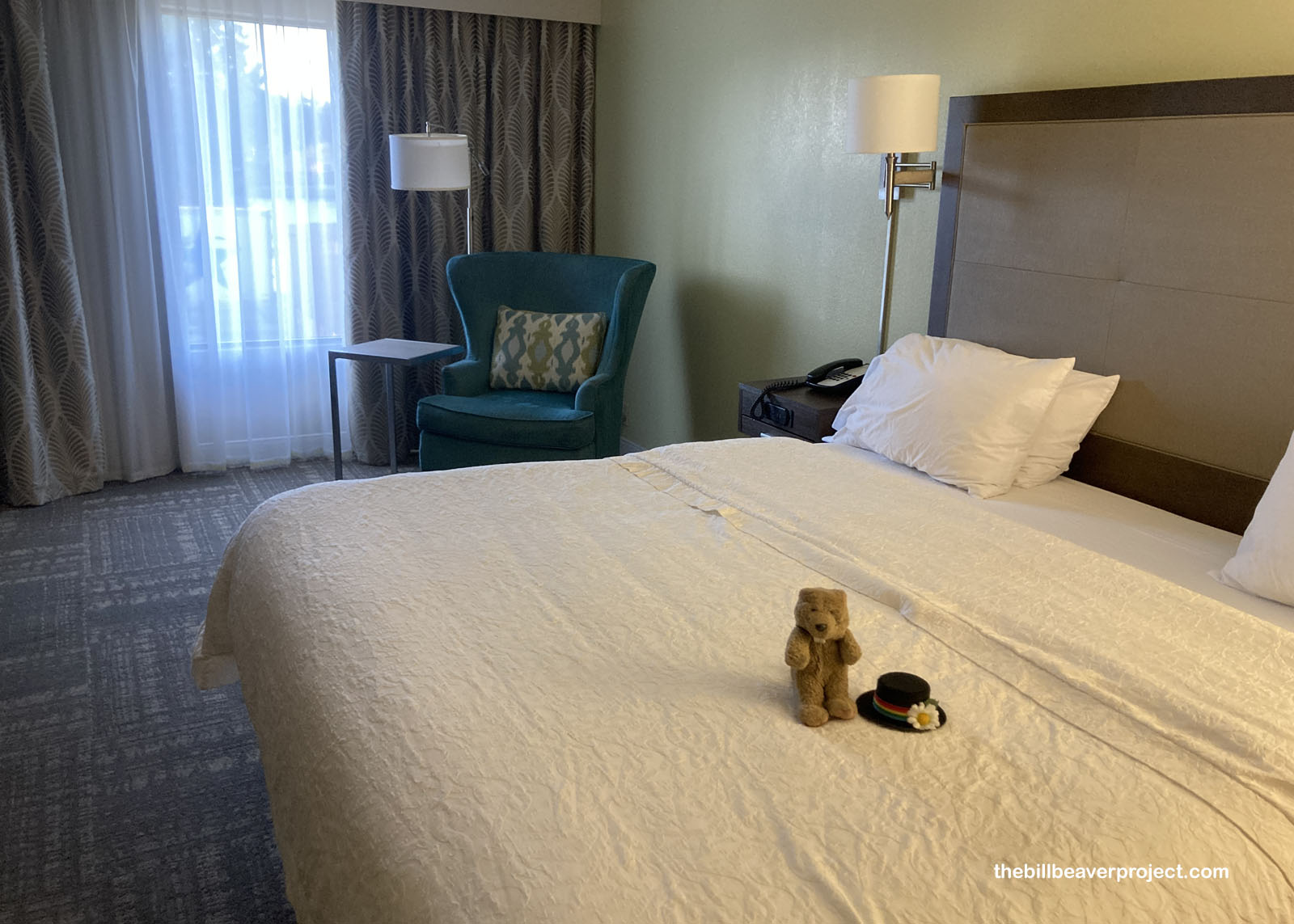 |
Today was definitely the most jam-packed of my three days in Florida. Tomorrow, I’ll have a smaller itinerary, but I plan to witness history in the making when students across the state walk out in protest of anti-LGBT and racist policies in the school system. I think it’s good to support these young’uns as they shape their own history, don’t you?!
Good fort-une to you!

 Previous Day |
Total Ground Covered: 448.0 mi (721.0 km) |
 Next Day |
